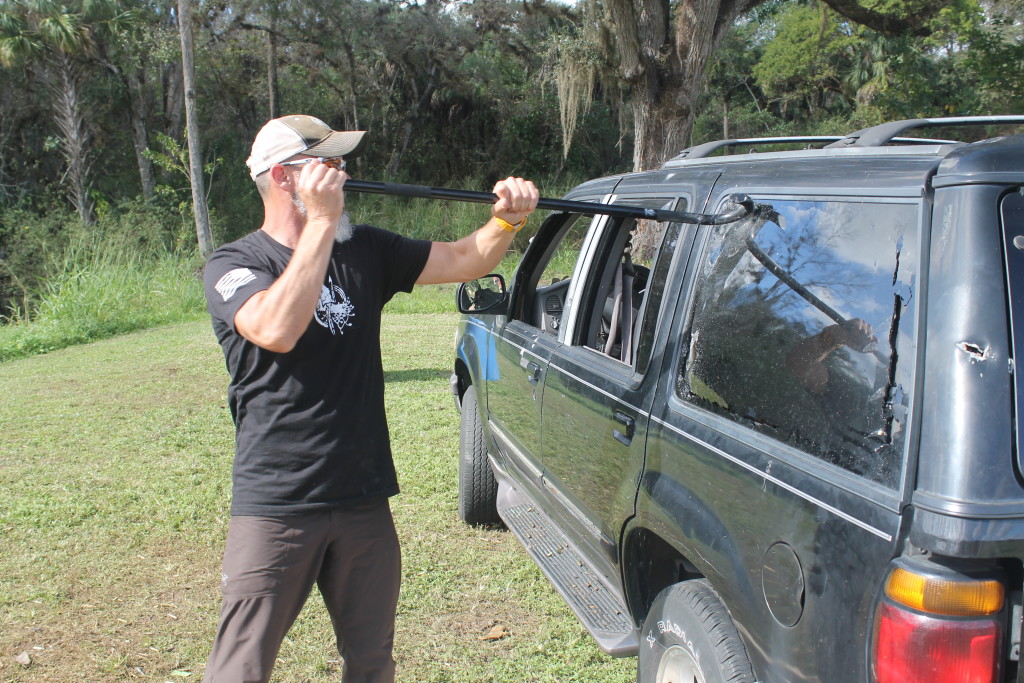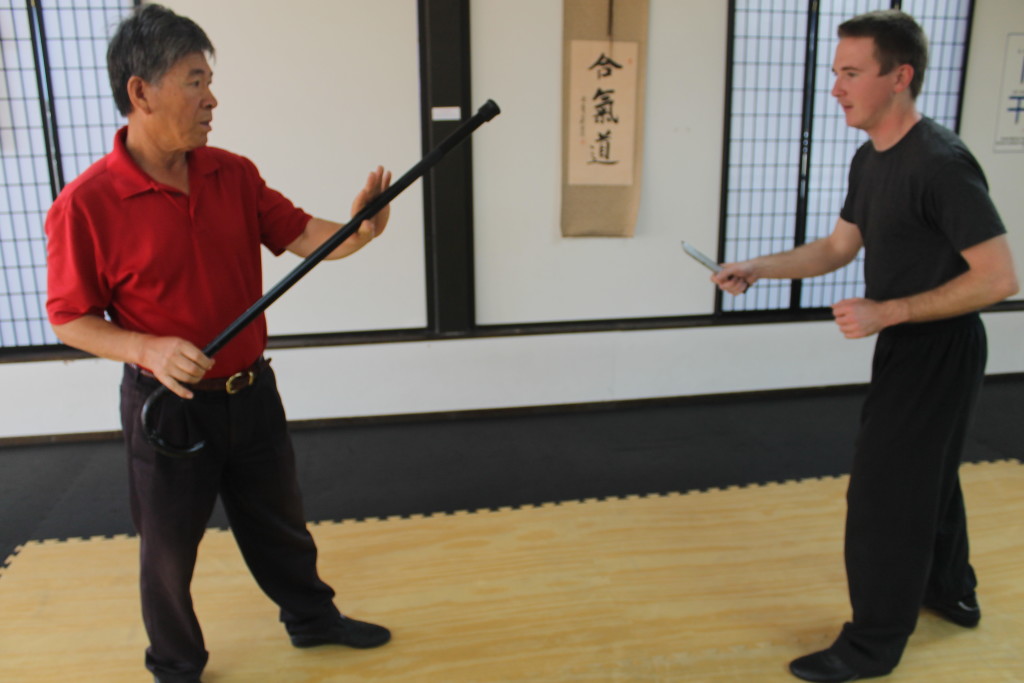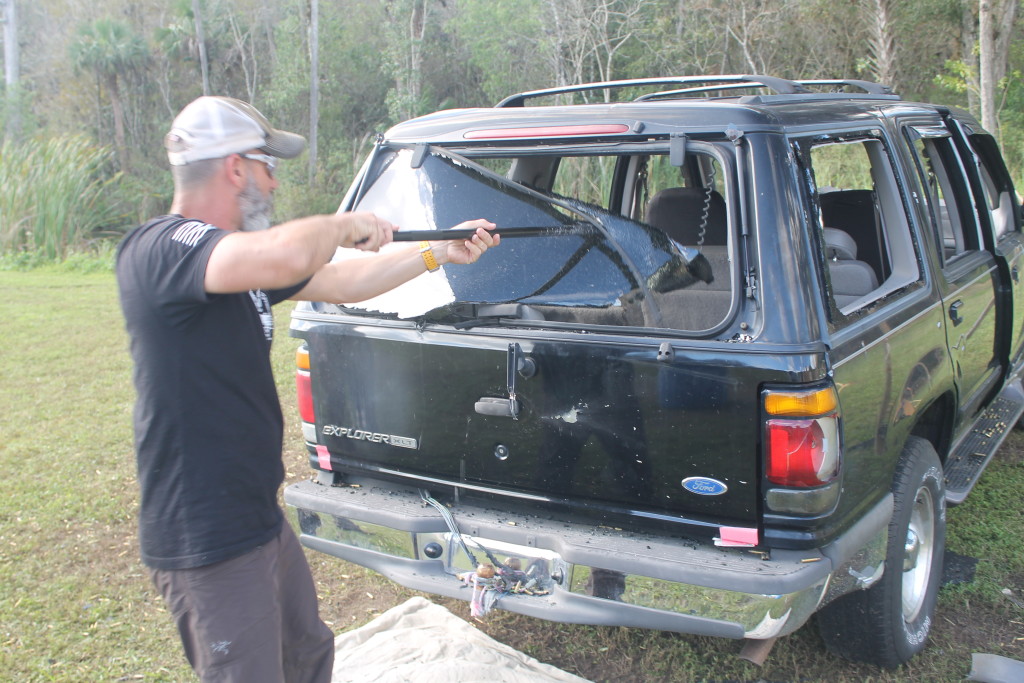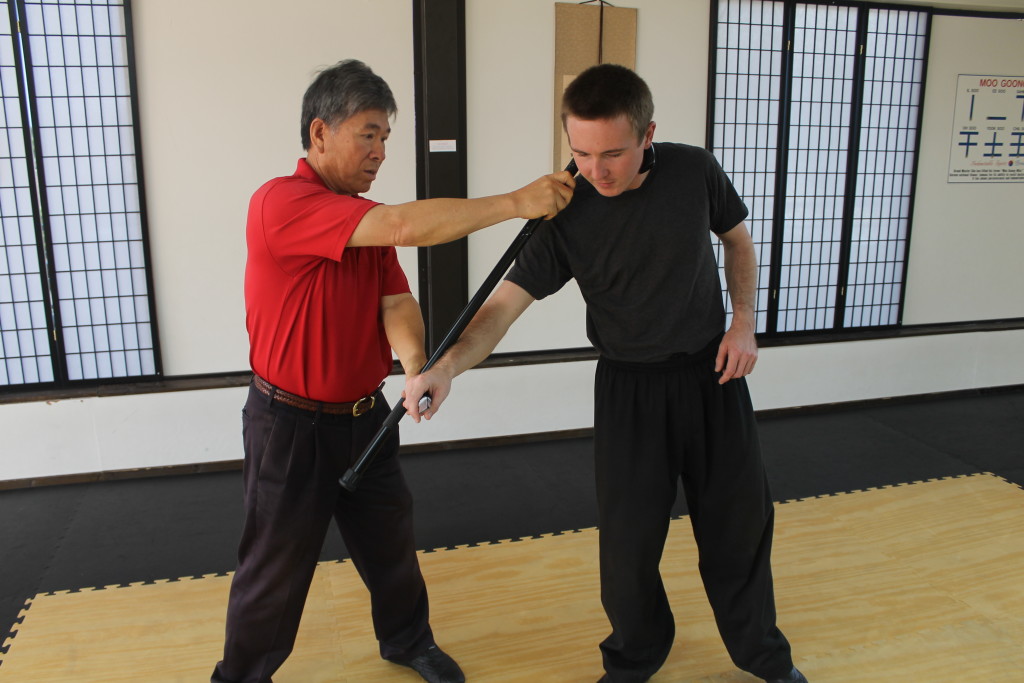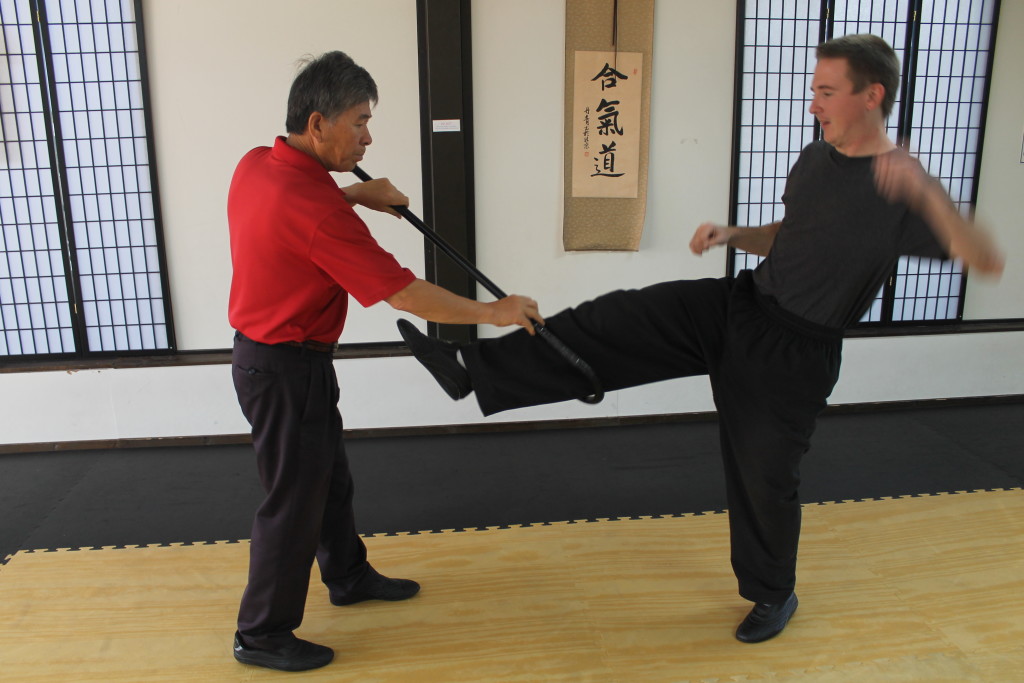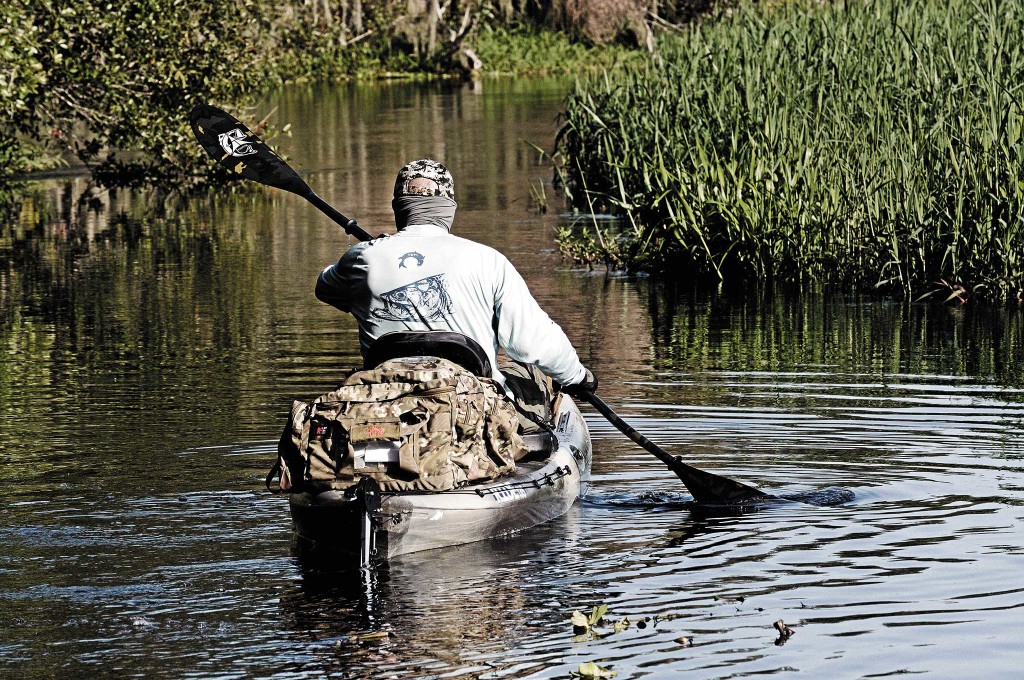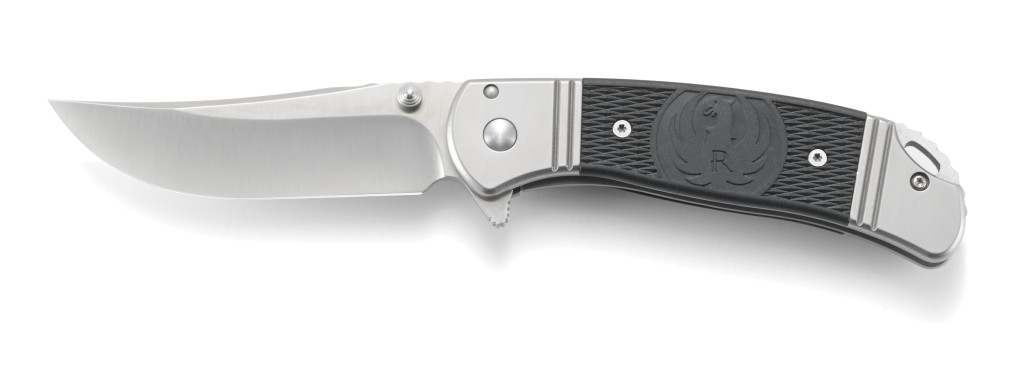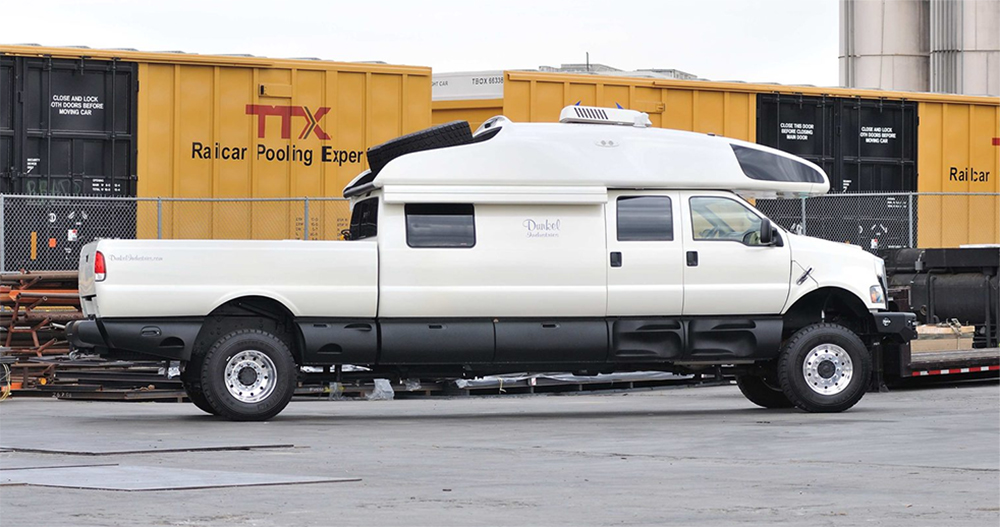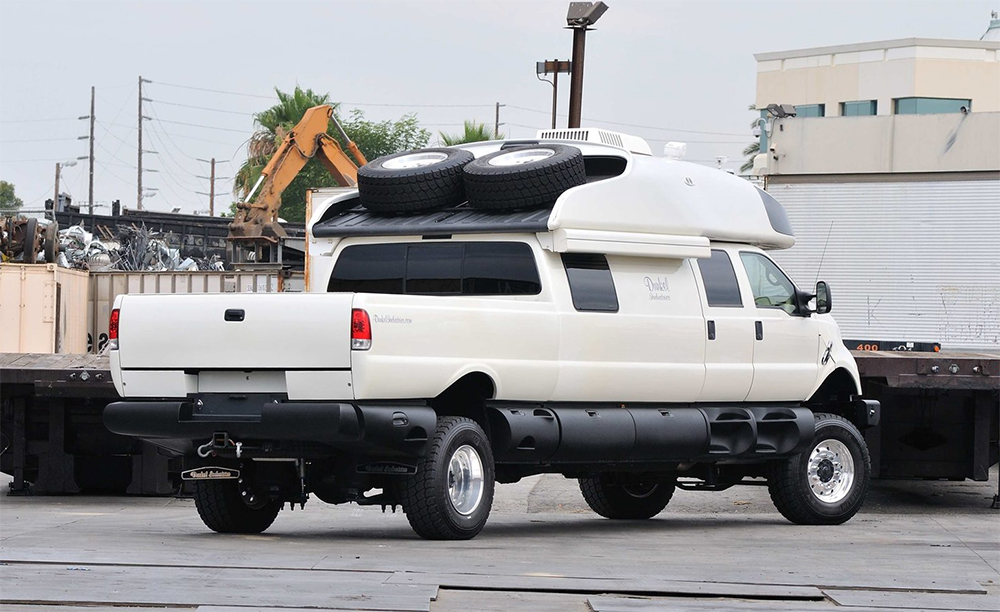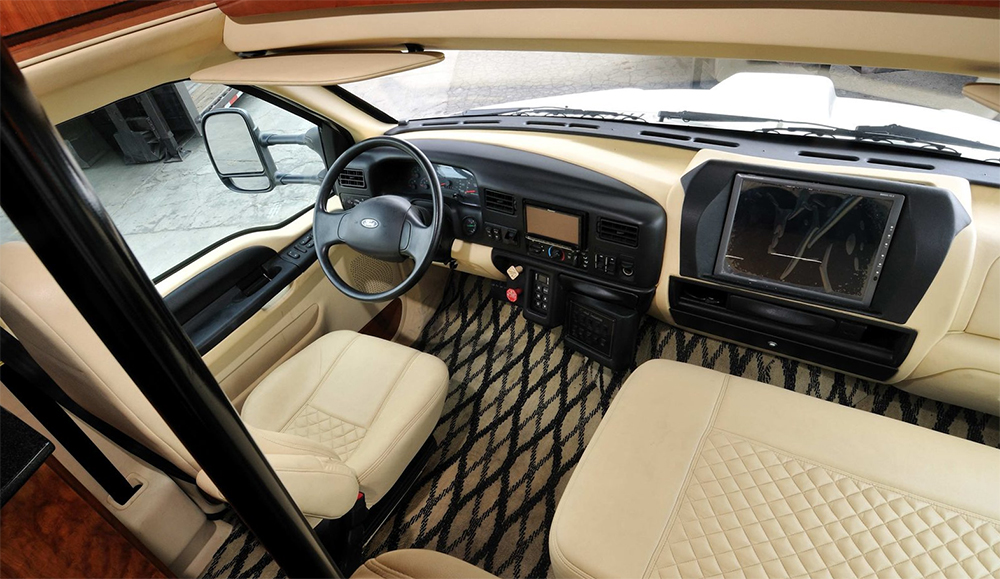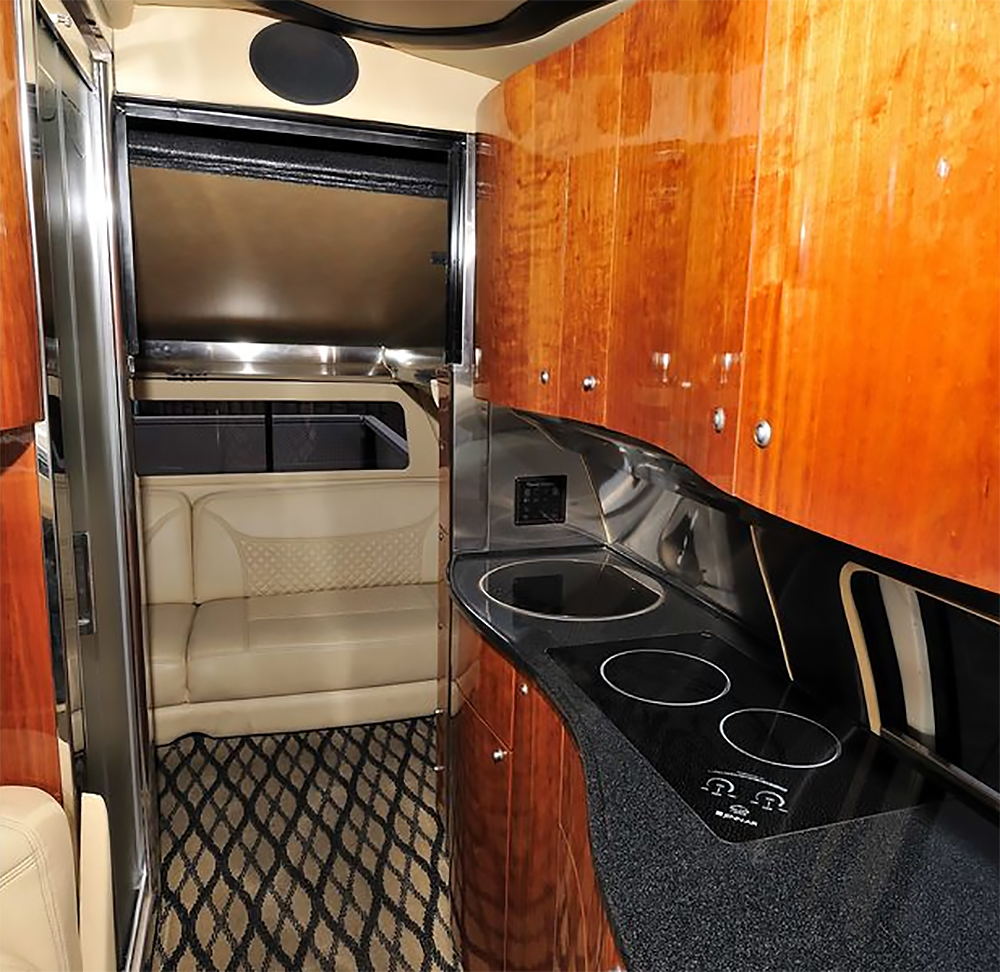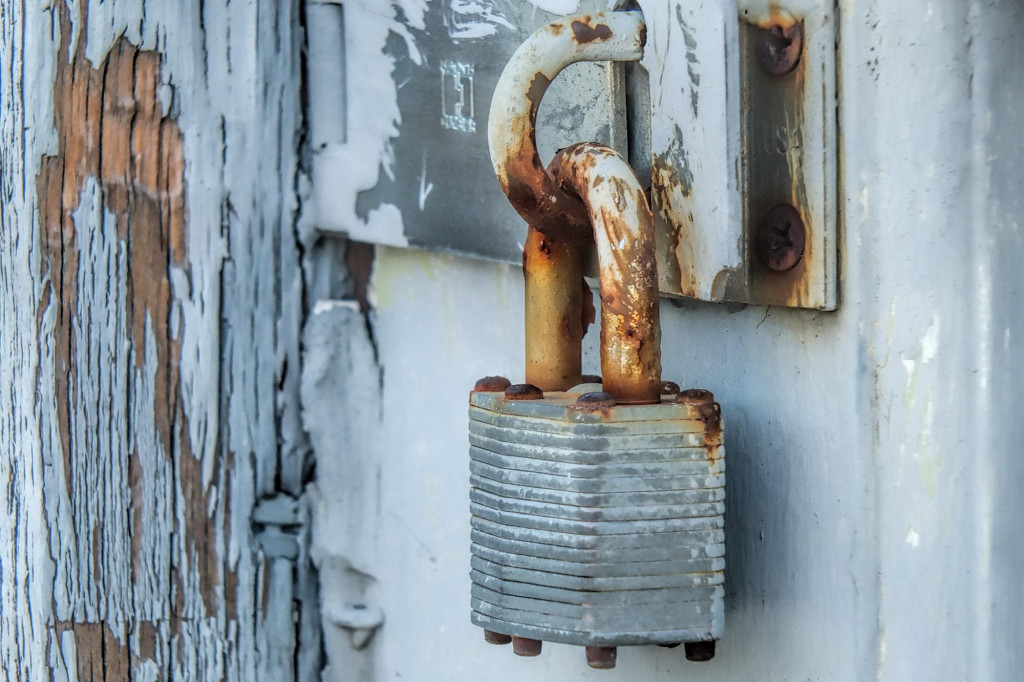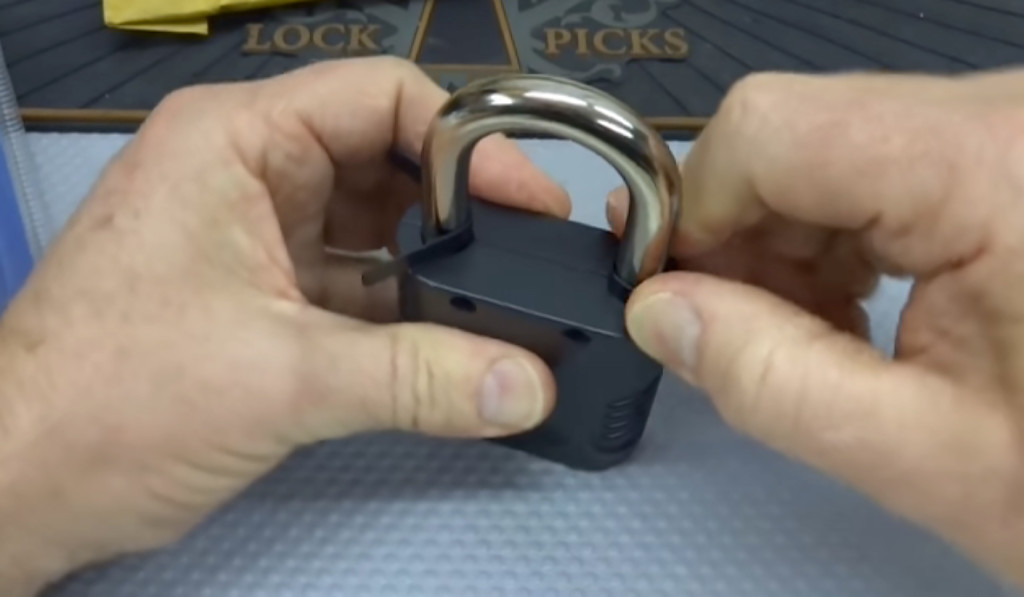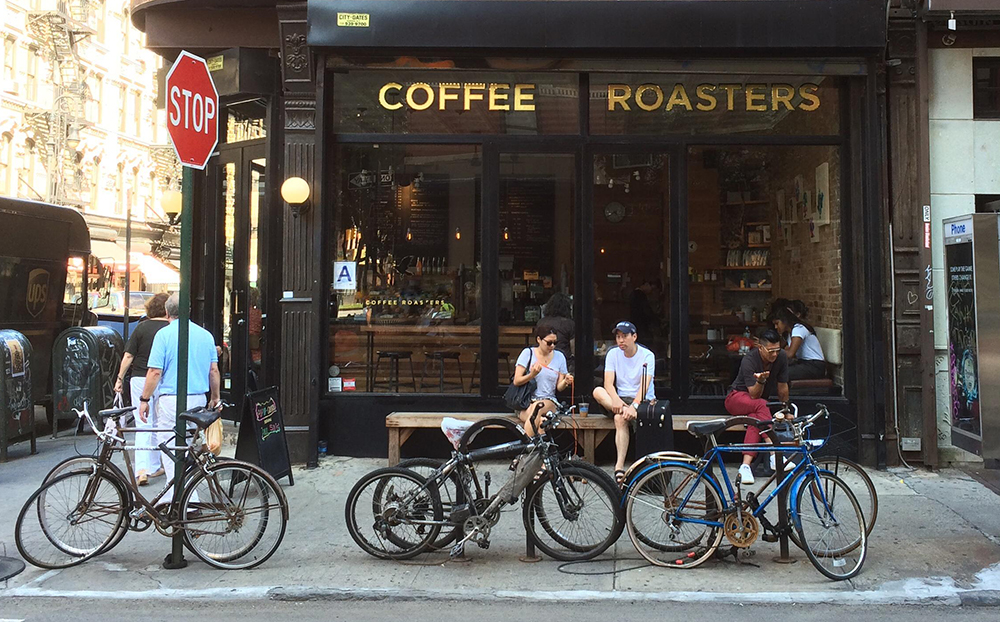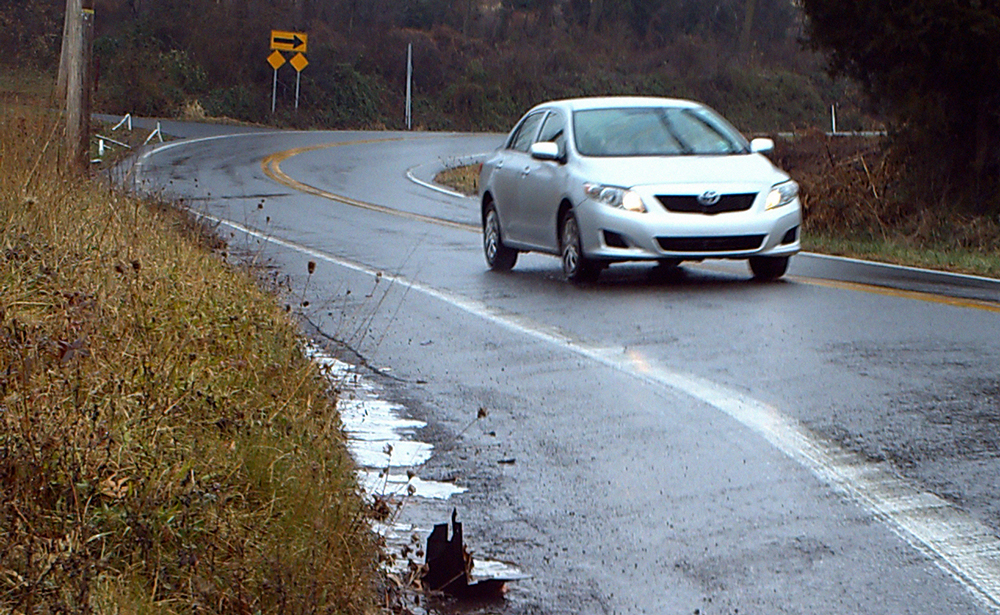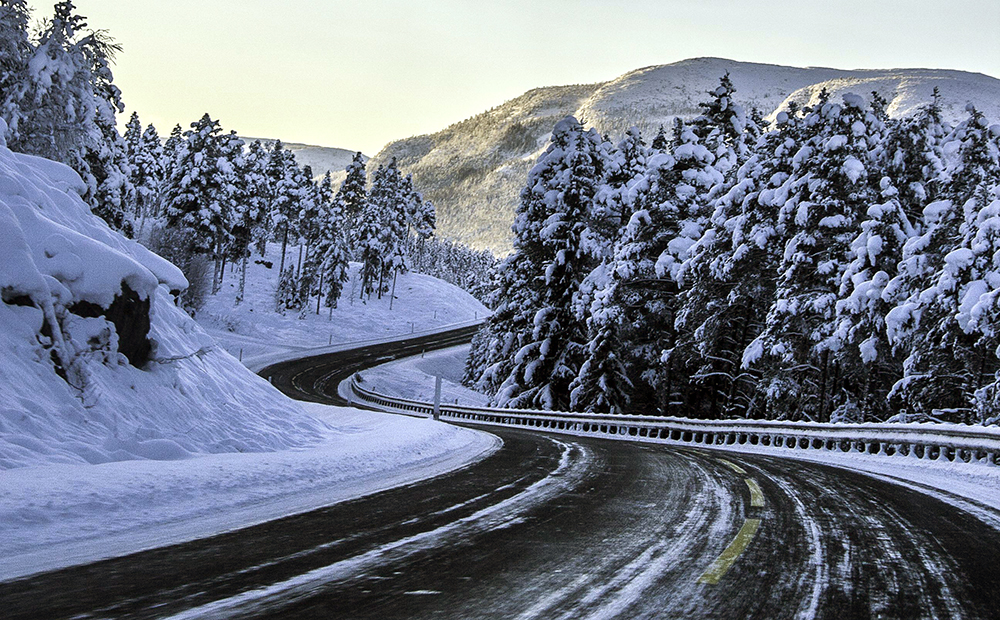Premium American knife-maker Zero Tolerance hit a major milestone this year: the brand’s 10-year anniversary. We’ve been impressed with the company’s “proudly overbuilt” folding knives in the past, so we used this momentous occasion as an opportunity to fly up to Zero Tolerance HQ in Tualatin, Oregon.
After spending several hours touring the factory, and snapping photos of how the blades are crafted from raw materials here in the USA, we sat down to interview ZT’s director of sales and marketing, Thomas Welk. This interview is exclusive to OFFGRIDweb.com — you won’t see it anywhere else! Thomas shared some thoughts on the difficult beginnings of Zero Tolerance, some of his favorite (and least favorite) knife-making projects, and the future of the knife industry as a whole.
We’ll share the transcript of this interview below, along with some of our photos from the Zero Tolerance factory tour. For even more photos, check out the gallery at the end of this article.
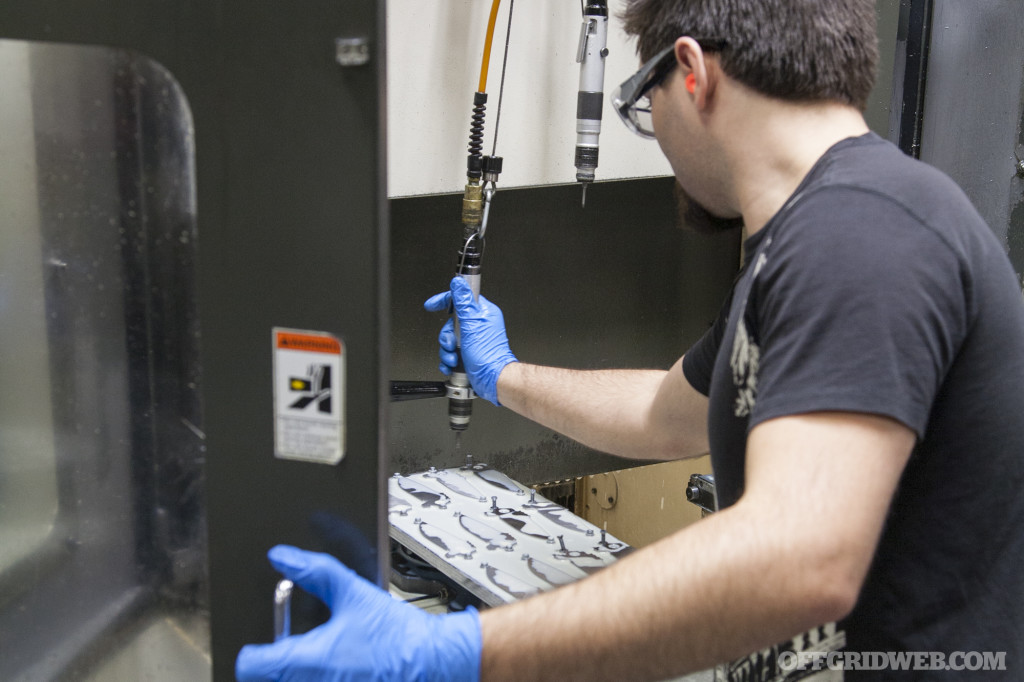
Zero Tolerance Interview Introduction
OG: Thanks for sitting down to chat with us today. To start, please tell us a little about yourself. When and why did you decide to join the knife industry?
My name is Thomas Welk, I’m the director of sales and marketing for KAI USA. I’ve worked for the company now for 13 years, and I’ve been in the knife industry now since the early ‘80s, like ’83 or ’84. And really for me, it started off when I had just moved to a new location down in Palm Springs, and I didn’t really have a job or anything. I was just a young kid, and I saw a “help wanted” sign in a window in a mall, and there was a retail cutlery store there called Plaza Cutlery, still a very premier cutlery store in southern California. I got hired, and I got the bug from there, and I was off and running. I worked there for about 10 years on the retail side, and I’ve been going strong ever since.
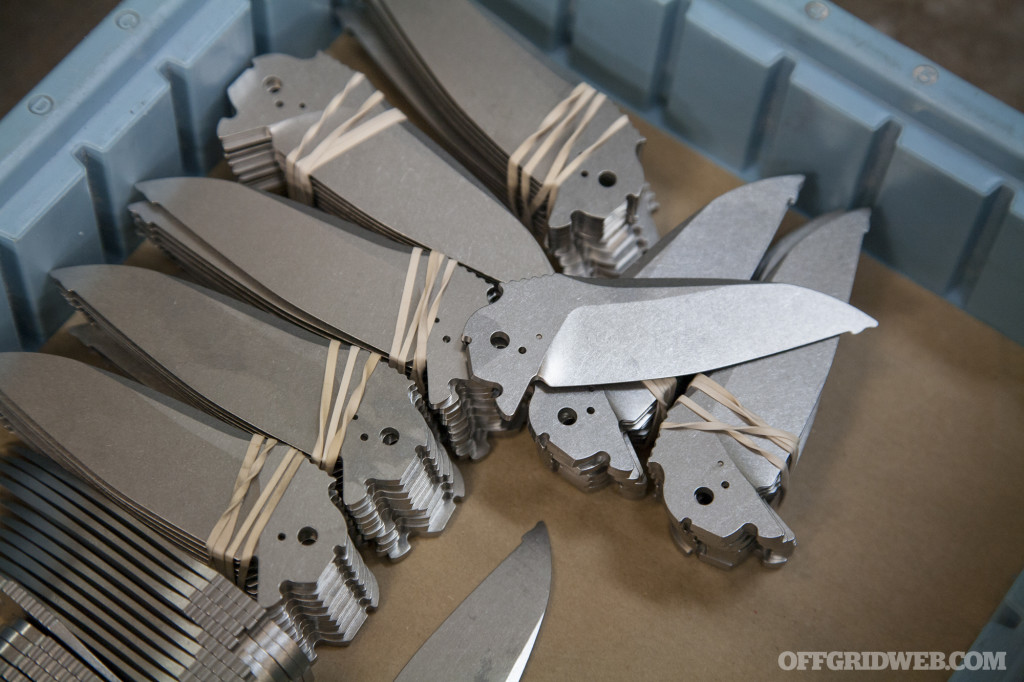
These Zero Tolerance 0770CF blades were recently stonewashed.
OG: How did you originally get involved with Zero Tolerance?
Being in the knife industry for 30 years or so, I was very familiar with the brands. Well, Zero Tolerance didn’t exist when I started to work here, there was just the Kershaw brand. But I was very familiar with the personnel here, and the products — I was actually selling the [Kershaw] products from a wholesale level at that point. So, they happened to have an opening in the sales department, and I talked to them on a fairly regular basis. It was a pretty easy fit, and I knew the guy that was running the sales department at the time. It was a networking connection that opened the door for me.
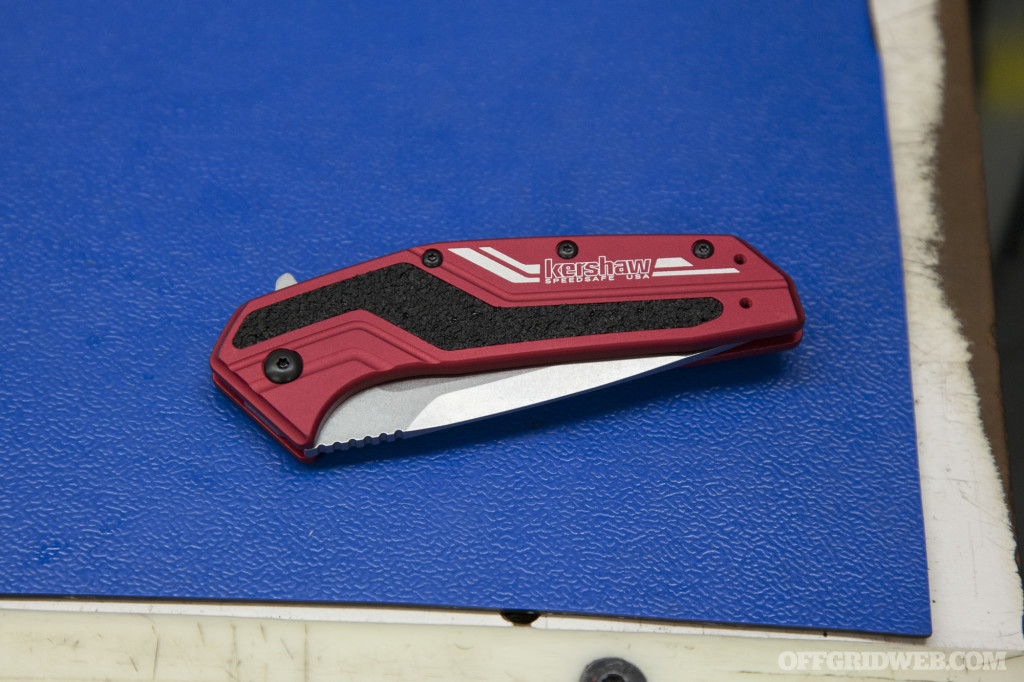
The Kershaw Dash is an assisted-opening flipper with an N690 steel blade.
OG: ZT was launched as a brand in 2006, making 2016 the 10-year anniversary. How does it feel to reach that milestone?
(sighs) It feels very fast, really really fast. I remember the first time that the concept of Zero Tolerance even came up. Just trying to come up with a logo, and even the name itself was very trying. It seems like it was just yesterday, and we started off with just a handful of products, and we were in this overbuilt folding knife category. It really took off.
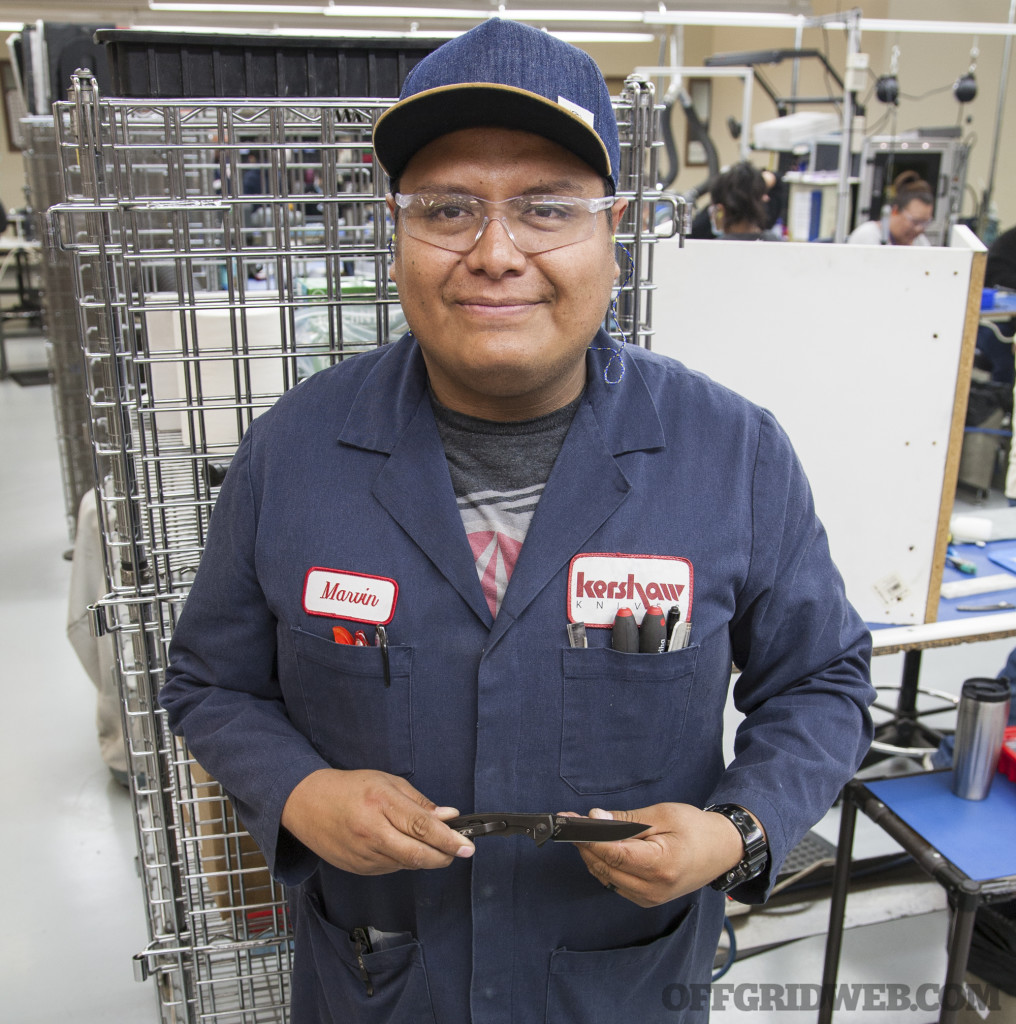
Marvin, one of the floor managers, shows off a freshly-assembled ZT 0450CF.
I think Zero Tolerance has evolved into being one of the premier USA-made production brands as it sits today. So, lots to be proud of, but I’ll tell ya—for a decade, wow, it was just a flash.
Understanding the ZT Brand
OG: How would you describe the relationship between ZT and its sister brand Kershaw?
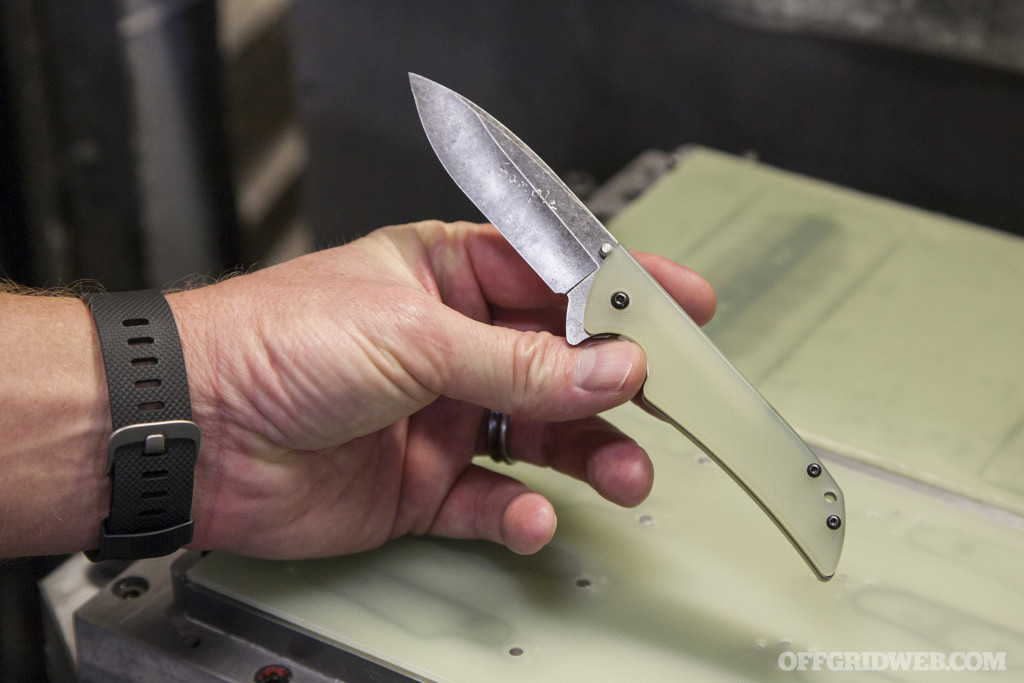
This Kershaw Skyline knife was fitted with natural uncolored G10 handle scales.
The sport side is Kershaw and Zero Tolerance—there’s a connection there. There’s some crossover customer-wise, but they do work separately as you saw in the factory. As far as their programs, and their pricing, and their distribution, they’re separate from each other. But on the production side, the same machines make some of the parts for the knives for our different brands, and on the sales side, the same guys sell both brands.

I will say that in the first ten years it was nice to have a brand like Kershaw. It was a strong brand that we were able to springboard off of. That was a really big deal, and it helped with the overall success of the first steps that we took with the Zero Tolerance brand.
OG: Tell me about the ZT “proudly overbuilt” motto. What does that phrase mean to you?
For me, it was the foundation of the Zero Tolerance line.
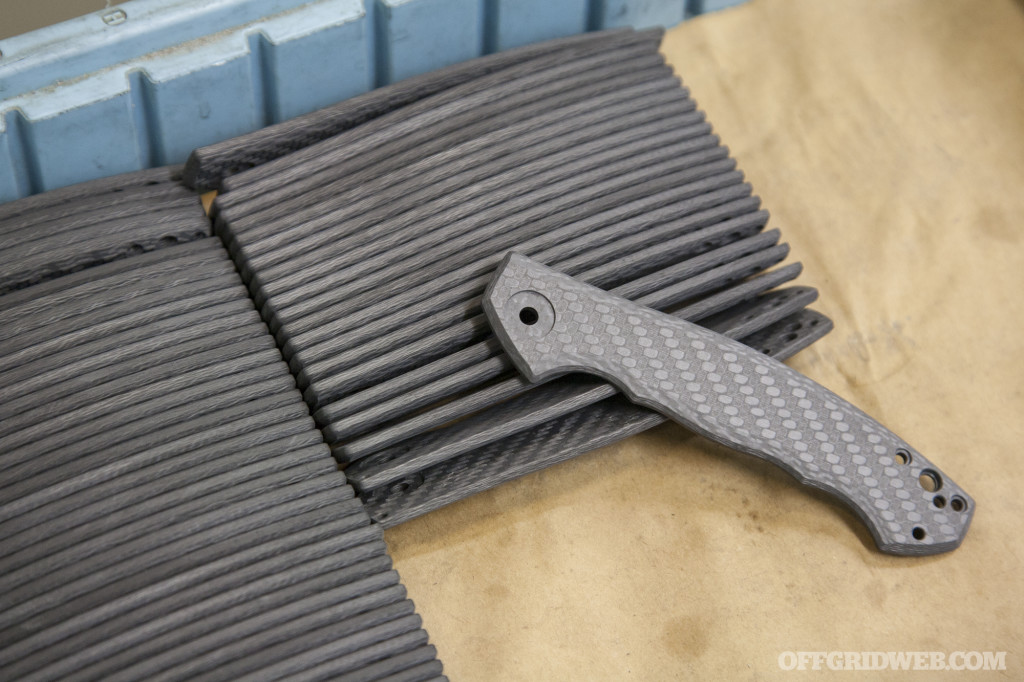
A stack of carbon fiber handle scales, which will be fitted on the ZT 0452CF.
In the beginning of Zero Tolerance, that genre of knife was in its infant stages. So we were able to create some products that were heavier and thicker, and built in a way that people hadn’t seen folding knives produced before. The blade thicknesses were bigger, almost prybar-esque in their appearance. There was a lot of machismo in these knives, and it appealed to the consumer. If we want to equate it to food, it was the New York strip that was being served, and they ate it up—they loved it.
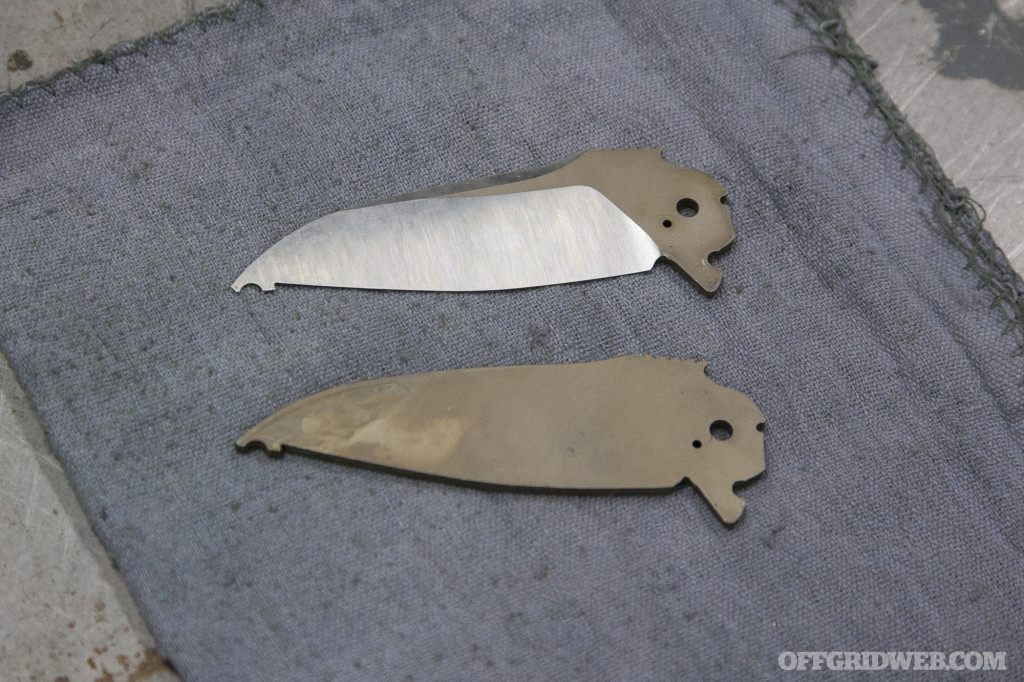
A raw blade blank (bottom) next to a freshly flat-ground blade (top).
In fact, that original description of “overbuilt” came directly from our customers. They were the ones who described us that way.
But, I would say that we’ve diversified since then, and didn’t want to get stuck in building only tank-like knives. That was not the ultimate goal, that was just a starting point, and it created a very solid foundation for us to get to where we’re at today.
Made in the USA
OG: As we’ve seen today, all ZT knives are manufactured right here in your Oregon facility. What led you to the decision to keep the brand exclusively American-made?
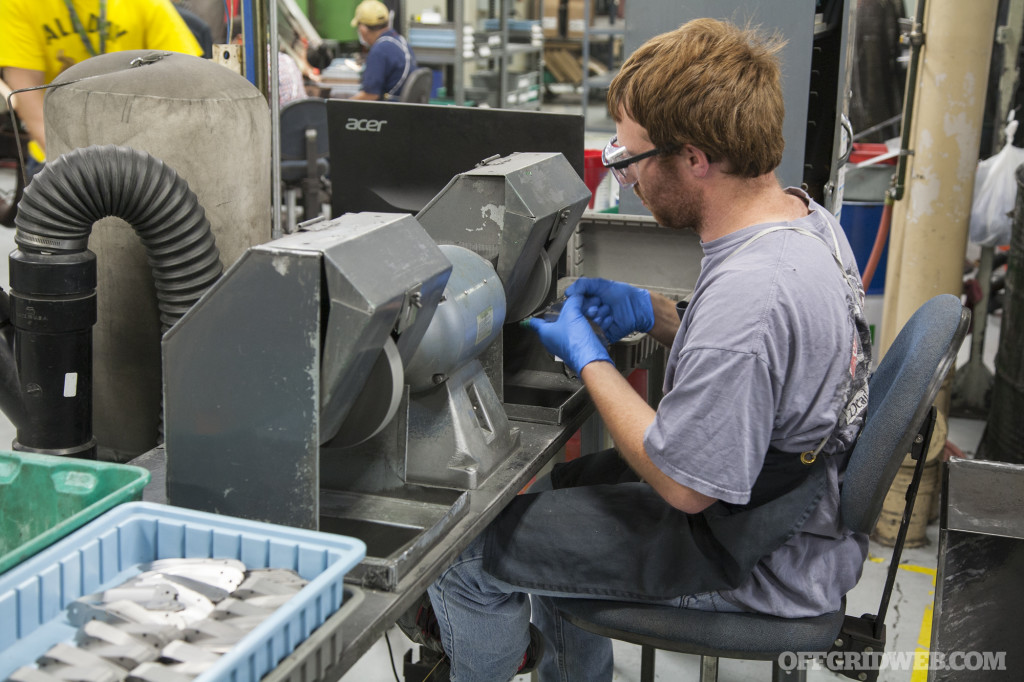
Ah… (pauses) I’m trying to remember, I don’t think we’ve ever even had a conversation about it being anything but built in this [Oregon] factory. It just felt very exclusive, it felt like a domestic brand and we felt like that USA exclusivity was important. I think those early customers rallied around it being a USA-made brand, and certainly we didn’t want to change that.
OG: Has keeping manufacturing in the USA been a challenging decision?
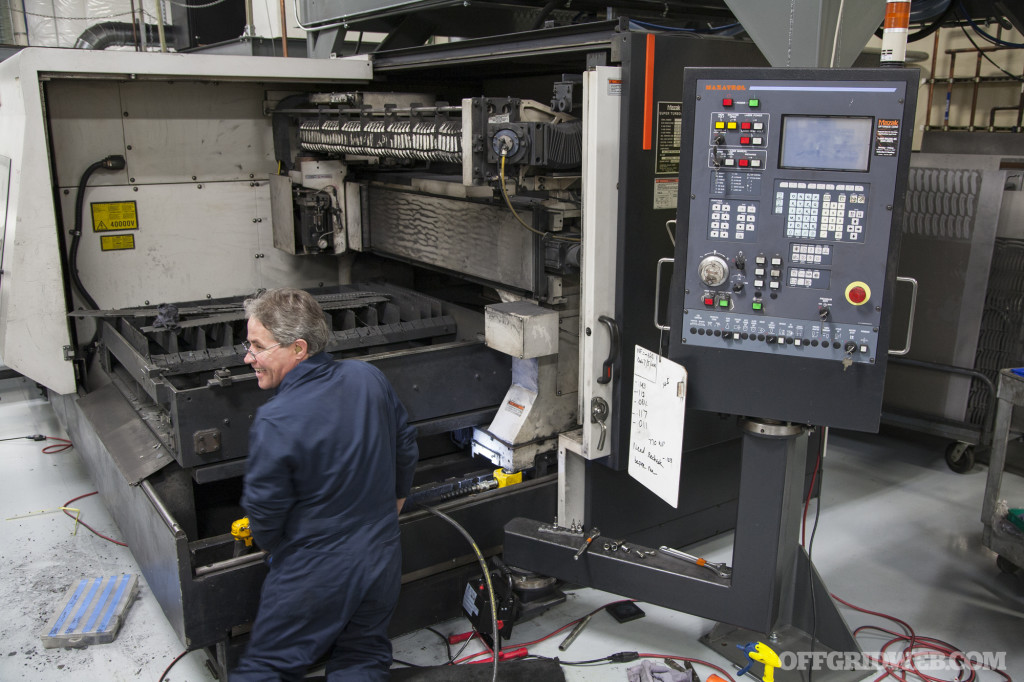
Rather than hire outside contractors, ZT has in-house employees maintain all its factory machinery.
No. And the reason why is that when you start dealing with the price point that we’re dealing with, the number of actual consumers that are going to spend $175 to $750 on a pocket knife is a fairly small group. It was easy to keep it exclusively USA. It was easy to continue to build products in that price point for these guys. China couldn’t keep up with the quality necessary to equate with the brand at all. So it was easy.
Blade Design Philosophy
OG: Aside from build quality, are there any other key considerations for the Zero Tolerance design philosophy? Like we were saying before, the thickness of the knife, the heft, physical appeal, and things like that?
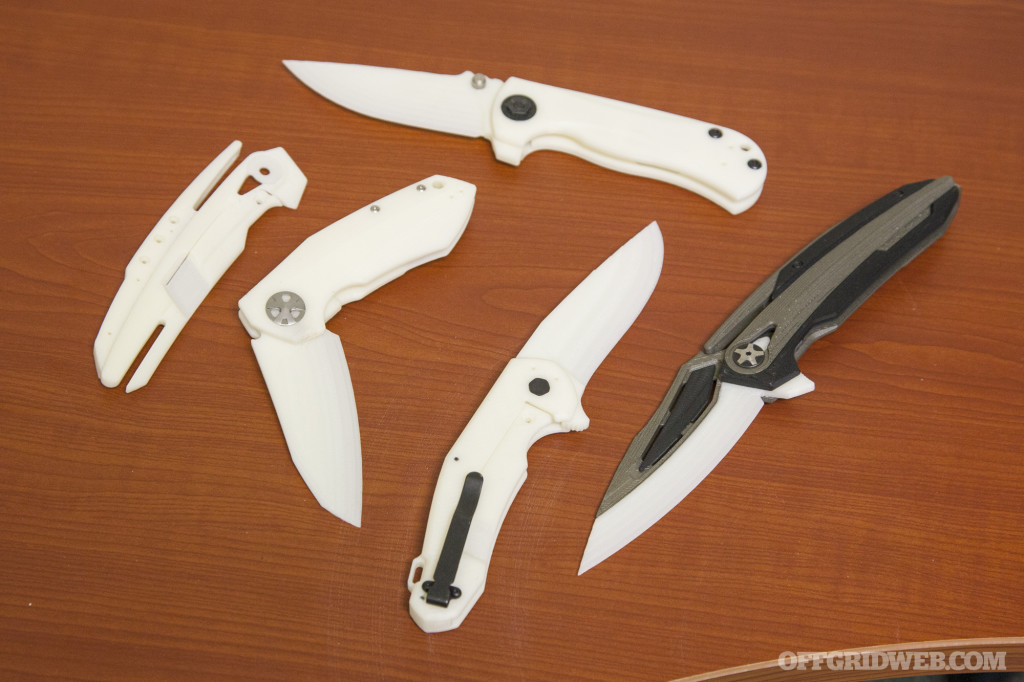
An array of 3D-printed plastic prototypes in the ZT in-house design department.
For us, we just try to be unique in design. Design is important. Unique design is essential for success.
If you keep serving the same product over and over it gets boring. From a design standpoint, it doesn’t have to be “overbuilt” for us, it just has to be unique. We feel that we understand the industry, and we understand the consumer and their appetites. We try to play toward those appetites.
OG: How do you go about achieving a proper balance of form and function in the designs of ZT knives?
Well of course, we’ve worked with some of the greatest custom knife makers in the world.
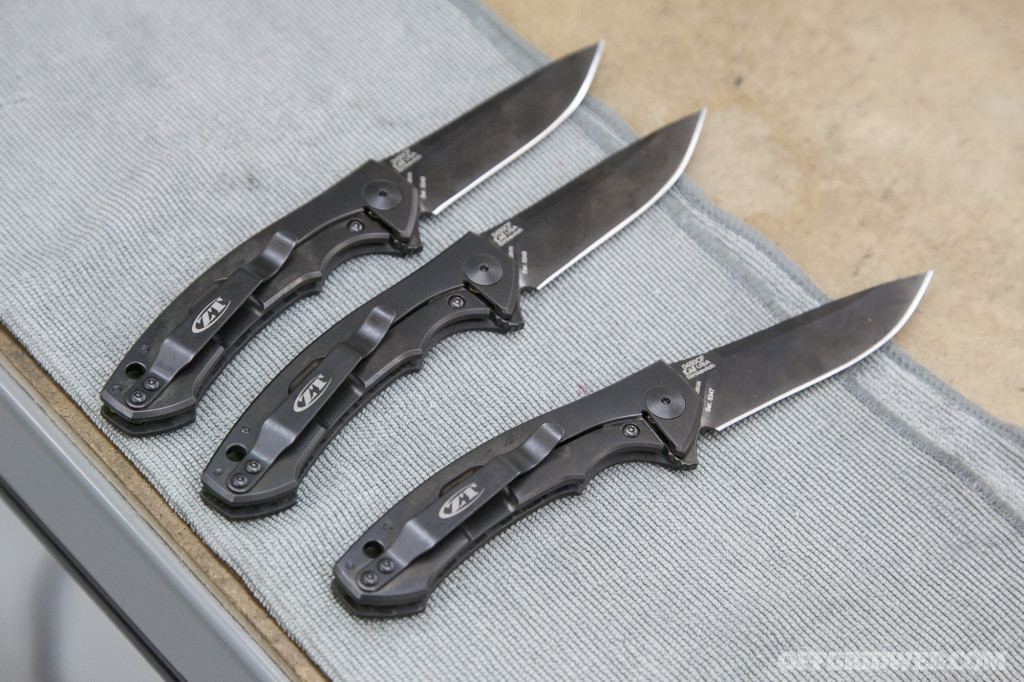
Dimitry Sinkevich worked with Zero Tolerance to design the sleek ZT 0450CF.
It was important to us that we diversify with the makers outside of the US market. We are an internationally-distributed brand, so it was important for us to work with Dmitry Sinkevich out of Belarus, and Jens Anso out of Denmark. We’ll be working with a couple others in 2017 that are outside the US borders.
Within the USA, working with RJ Martin, and Les George, and Todd Rexford, these guys are awesome. The hardest thing for us when we borrow designs from these guys, is to try to capture the spirit of what they do from a production standpoint. That’s very difficult.
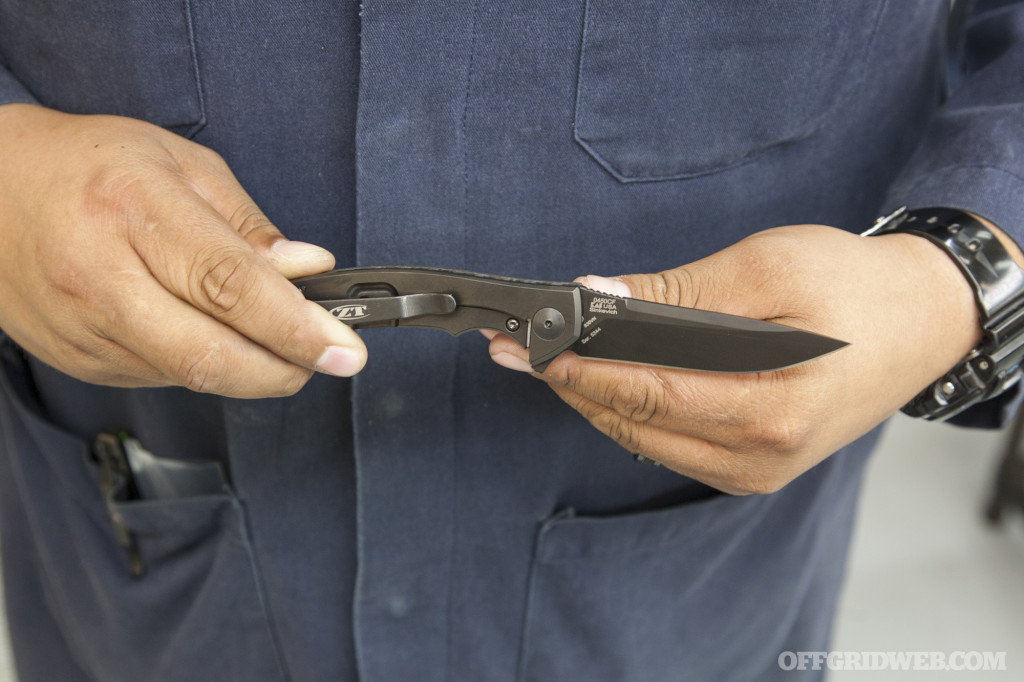
I think we do a really good job working with these custom knife makers, and our internal design team who we have a lot of faith in. I think we’ve been able to really hit design and to do what’s necessary to produce a product that looks good and functions well.
Real-Life Applications
OG: Many of your knives are being used in war zones by soldiers, wildfires by firefighters, and city streets by law enforcement officers. What makes them appropriate for these demanding or life-threatening situations?
We talked about build quality earlier — I think the premium materials that we use, and in many cases, the designs that are incorporated all play a part. Being ambidextrous is important, for instance. Blade size as well.

Parts are meticulously checked for quality at multiple stages throughout the build process.
I will say that as we have moved and evolved the brand that many of the products that we have are not necessarily made just for military, law enforcement, or public safety. They’re literally made for the general consumer.
I also feel that it’s eye appeal. Even from a soldier’s standpoint or a law enforcement standpoint, looks are still important. I think it even trumps functionality in a lot of cases. If I was a law enforcement officer, do I really need a knife that has a seatbelt cutter and a glass breaker? Or, could I have this really slick-looking Zero Tolerance knife that’s still going to cut my way out of anything that I want?
OG: If you were lost in the middle of nowhere, which ZT knife would you want with you?

ZT collaborated with Rick Hinderer to create this 0180 fixed blade. Sadly, it’s now discontinued.
I’m picturing myself there now, I’m very sad. (laughs) I would say that I would probably not go with a folder, I’d go with a fixed blade. So the Hinderer piece that we did, the Zero Tolerance 0180. Just to have the fixed blade for the strength. Or maybe the ZT 0909 if I needed a folder, that’s a big brawny one.
The Build Process
OG: In your 2016 catalog it states, “Your response to our products is telling us what you want. And we are building it.” How does user feedback affect the build process here at ZT?
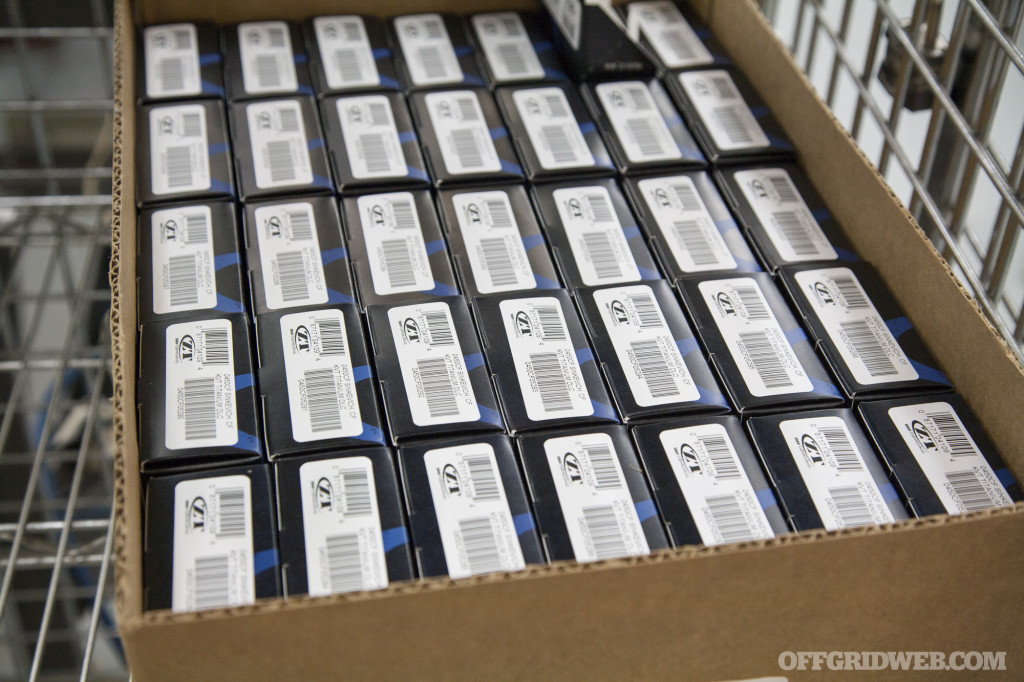
We get feedback, and it’s important to us that we hear back from them. Once consumers get the product, in some cases there’s praise, and in some cases there’s constructive criticism. Often with a specific model, we have gone through generations of improvements, and in many cases that’s based on the feedback from the actual consumer. That’s where the feedback is most beneficial to us.
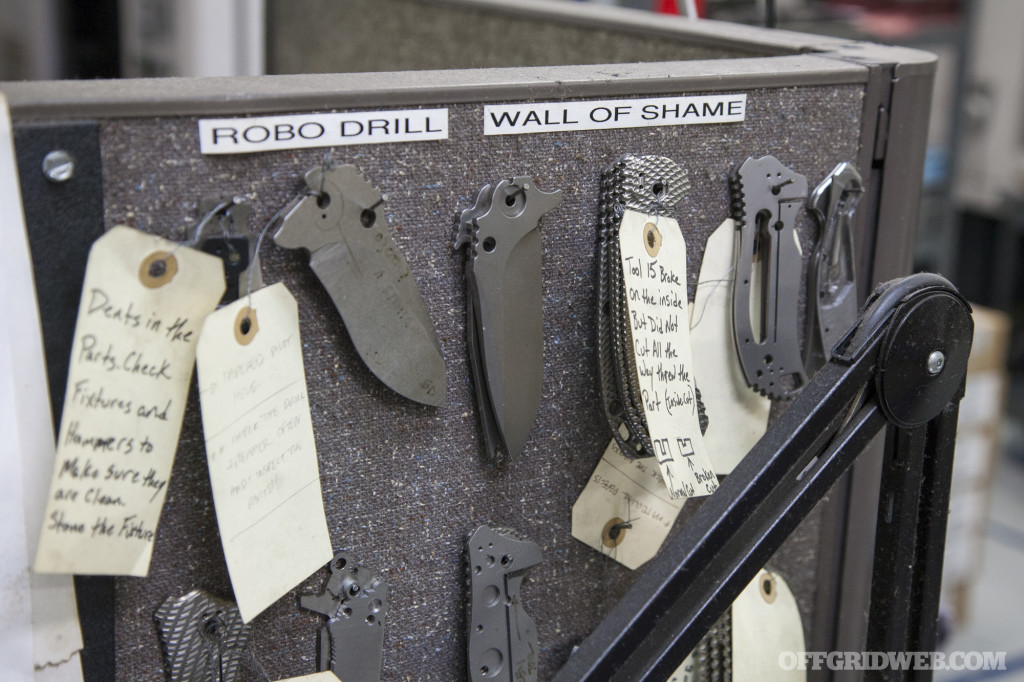
We spotted this “wall of shame” at one workstation. It displays past manufacturing errors to learn from and...
Also, with the smaller 0450 that we built, it’s now one of our top sellers. So that’s important too—what do people do once the product is there? They’re buying it, so we’re going to build more along those lines. Our sales data is communication. If we’re seeing smaller knives and faster knives selling, versus the larger knives, it’s affecting future direction.
OG: ZT works with a wide range of well-known independent knife designers, like Rick Hinderer, Les George, and Todd Rexford. Tell us a little about how the collaborative process works on those builds.
We usually meet with the makers, and through a given year there are very small windows of opportunity. We meet with them face-to-face twice a year, maybe three times a year. Especially the international guys, it’s very hard to see them on a regular basis. But they’re free to submit designs at any time.
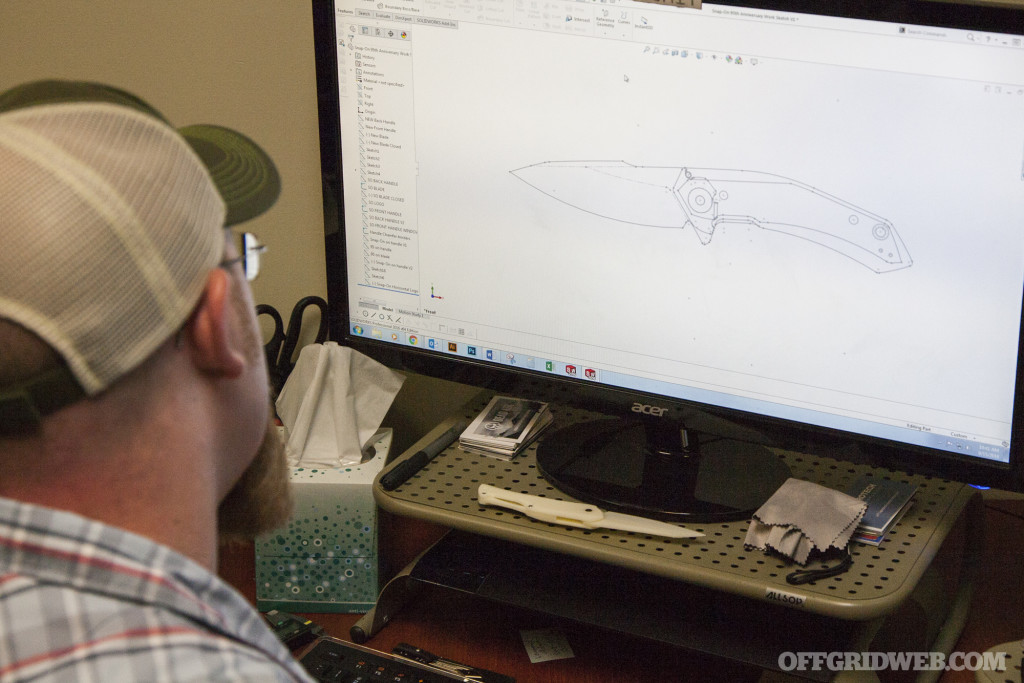
In-house designer Jim MacNair uses Solidworks CAD software to digitize blade designs.
Normally, the way that it works is they ask a lot of questions. They ask us, “What’s selling? What do you want?” You know, sizes, shapes, genres, that sort of thing. So we usually paint pictures or create boxes for them, and they come back based on what we’re looking for and fill the box the best that they can.
In many cases, they’ll come to us and say “I have a new design” or “this pattern is really taking off” and we’ll look at it and go “let’s do it”. Let’s try to do an XM-18, like from Rick Hinderer, or something like that. And when we did that, we’ve had really solid success that way. [Editor’s note: The ZT 0562 is based on the Hinderer XM-18 design.]
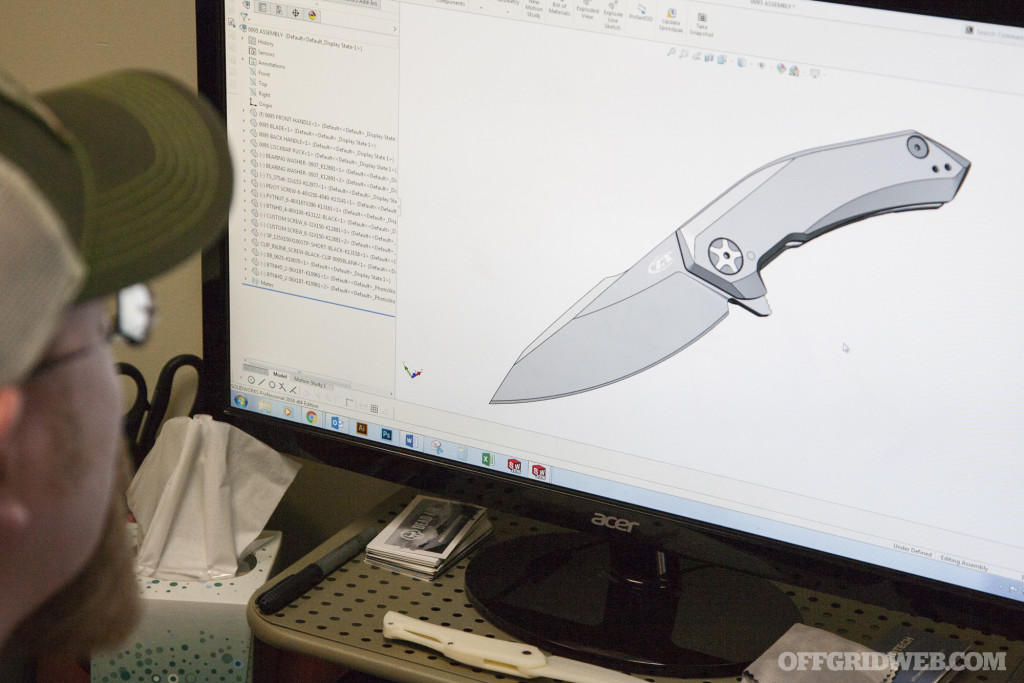
So, sometimes we cherry-pick their best, and sometimes they ask us and come up with really individualistic designs that came from input from us. From there, [in-house designer] Jim MacNair will start with the Solidworks [CAD software] stuff, and we’ll go back and forth a little with the designer. You know, “how does this look, do you feel OK with this?” And then we usually just go for it.
OG: Conversely, how is this process different when working with your in-house designers?
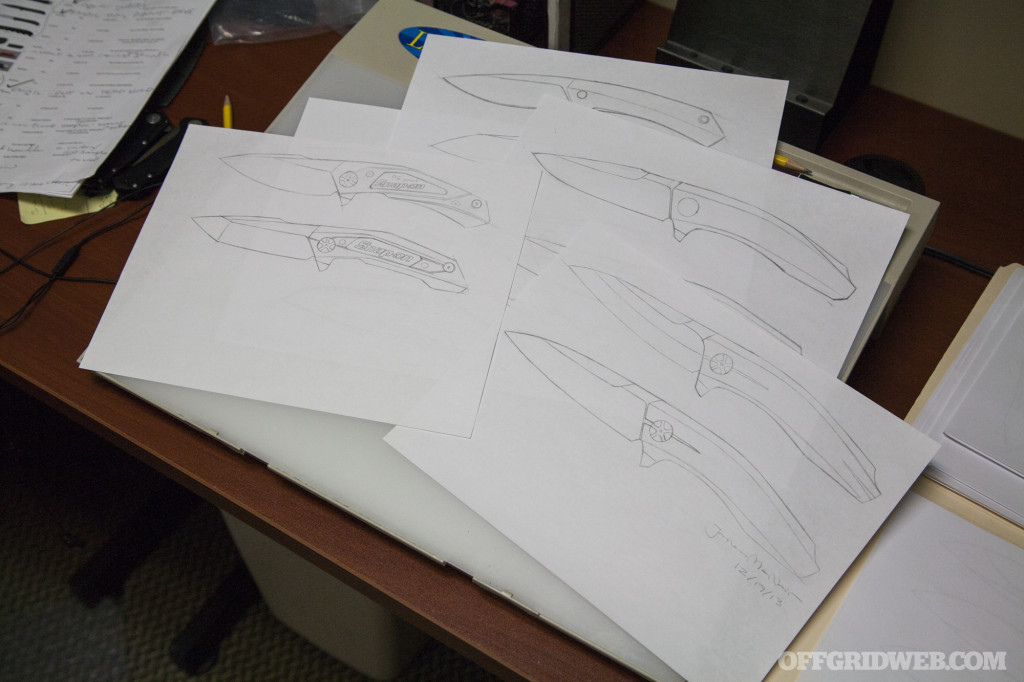
A few revised blade design sketches by in-house designer Jim Macnair.
A lot of times, Jim will just come into my office, and he’ll lay out six pieces of paper that have pencil drawings of like 12 knives on each piece of paper. So I’ll have 72 knives in front of me that are just pencil-drawn. Then we whittle it down, we talk about it, and we’ll usually cut it down to 10 or 12 pieces.
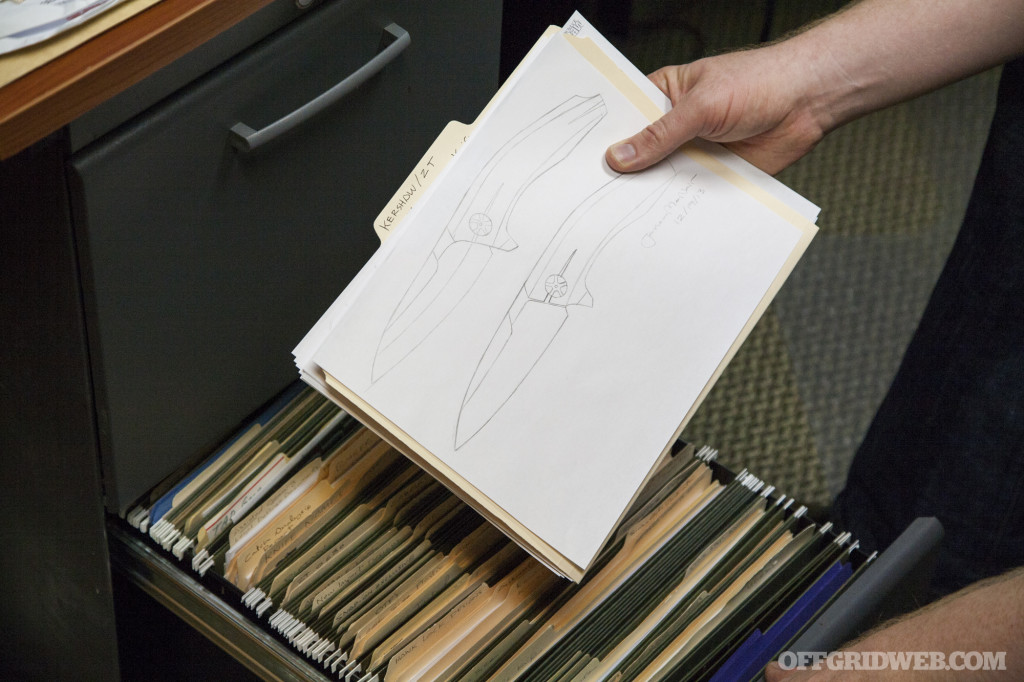
From there, he’ll take those individual ones, and work on them further. He’ll bring me 7 or 8 sketches of each one of those 12 knives, and we’ll deduct from there until something good happens.
But also, like with the outside designers, a lot of the time we’ll tell Jim or Tim Galyean, “look, this is what we want. We need a 3-inch folder and this genre of knife.” They’ll work on it from there.
Highs and Lows
OG: What are some risks and challenges ZT has had to overcome in the last ten years?

Well, the first challenge we ever had — since we’re talking about the 10-year anniversary — was in years one, two, and three. The biggest challenge is to create a new brand that nobody’s ever heard of, and to make it mainstream, or a name that goes along with a 40-year brand [Kershaw] that’s right next to it.
It was very, very challenging to create something that was brand-new instead of saying, “why don’t we just use the Kershaw name?” We decided to take the hard route, and create a brand-new knife brand, and go for it. Any time you create a new brand, it’s going to come with a lot of heartburn, and we had that for sure.
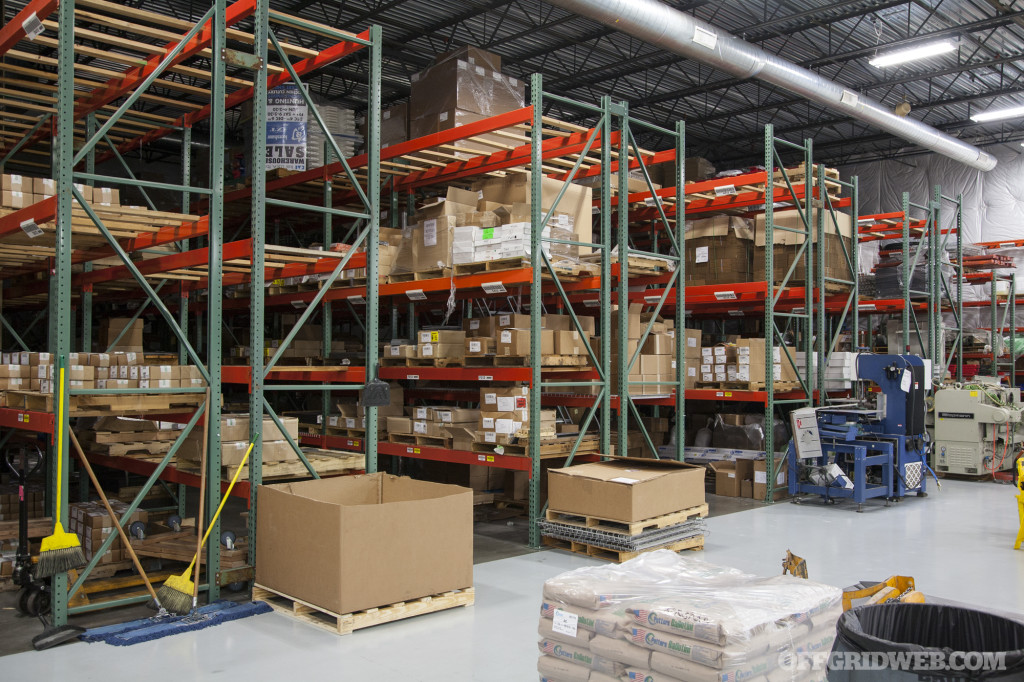
There was a big financial risk, too. We had to invest into the factory, and we borrowed a lot of money from the Kershaw side before Zero Tolerance was able to stand on its own two feet. We hired extra personnel, and so we felt some responsibility on that end as well. It was a really stressful time. Thankfully it turned out OK, but man, it was not a lot of fun.
OG: Do you have any recollection of specific knife designs that were particularly challenging or rewarding?
Yeah, there’s a whole bunch of them. (laughs) Probably the biggest transition, speaking broadly, was when we went into the manual flipper market.

The ZT 0560 was the company’s first venture into the flipper market.
When we came out with the Rick Hinderer 0560, that was an Internet phenomenon, and there was more hype on that knife than ever. At the same time, trying to create a manual flipper on bearings — which we’d never done before — and trying to get it to function properly and live up to the hype was… (exhales) wow. There were so many highs and lows that went on with that project, it was crazy. As it sits here today, it has been discontinued, but that was a platform knife that we cut our teeth on. The knives that we create today in that same genre are brilliant compared to it. That one was really the launching pad for all the manual flippers that we produce today.
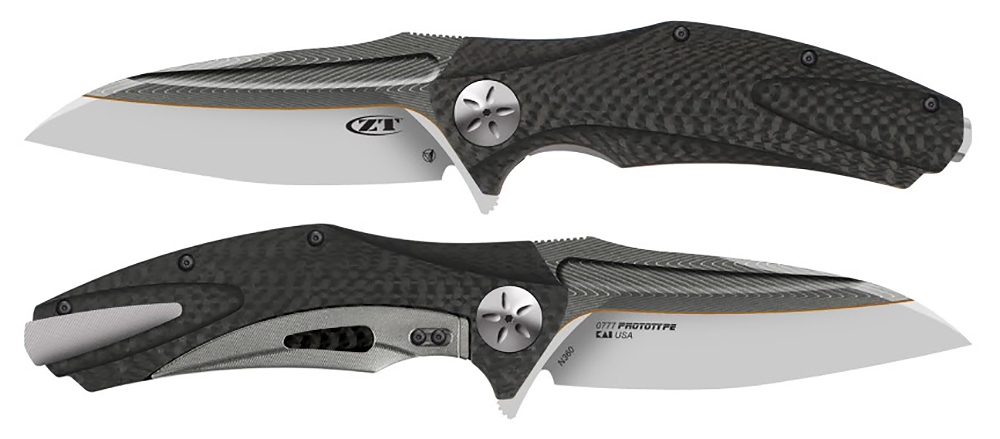
The ZT 0777 was a limited-edition build with Composite Blade Technology that pushed the limits of manufacturing.
The other one was the Zero Tolerance 0777, the limited edition one. Wow. We tried to expand and push ourselves outside our comfort levels. From a production standpoint, we were taking custom Damascus steel, and using [ZT’s proprietary] Composite Blade Technology to create a blade that had never been done before, with a lock that we’ve never produced before. It was super challenging. We had material issues, there were setbacks, there were fistfights in here. (laughs) I mean, it was the hardest project ever. There’s nothing that has come close to it, that was the worst. And it was the best knife we had ever created at the same time.
Looking to the Future
OG: Can you give us any hints about upcoming projects to keep an eye out for?
Yeah, we have a new designer that we’re working with in 2017.
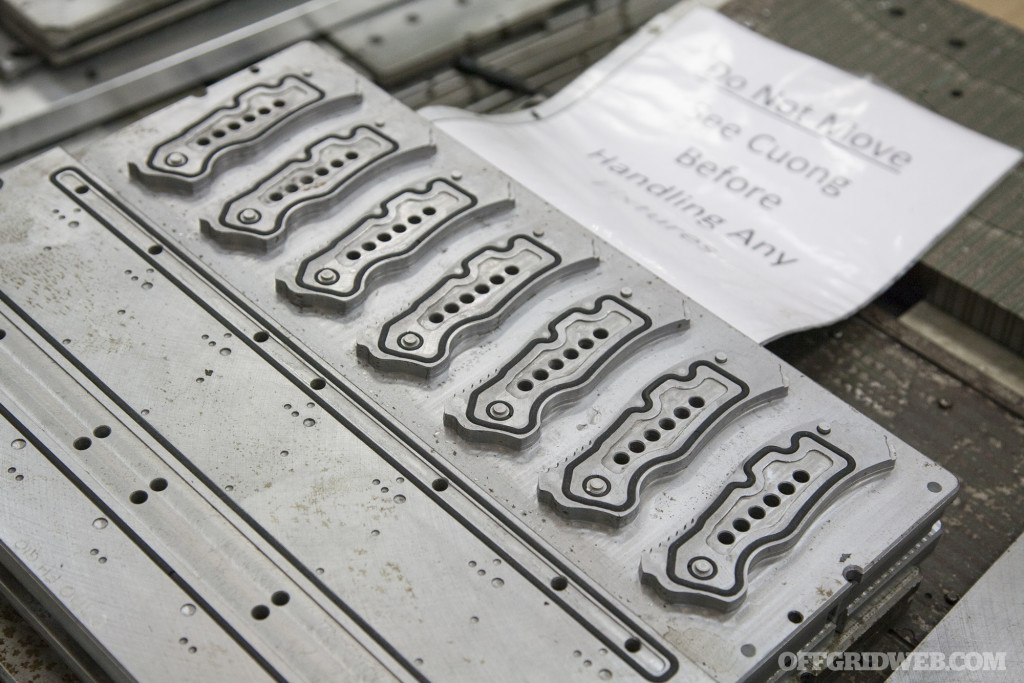
Also, we talk internally about different genres in the tactical market, and the genre that we’re looking to get into for 2017 is what we’re calling the “adrenaline” market. It’s based on visual speed and performance speed. That’s one of our goals for 2017, to break into the new adrenaline market. You heard it here first!
OG: Are there any blade features or design styles that we’ll probably never see from ZT? For example, a ZT machete, or a friction-folder, or something with exotic materials. Or is pretty much anything fair game?
I would say anything’s fair game. Well, we don’t do a lot of fixed blades, and the reason is the sheaths. The sheaths are always the hardest part, and we don’t like to do that.
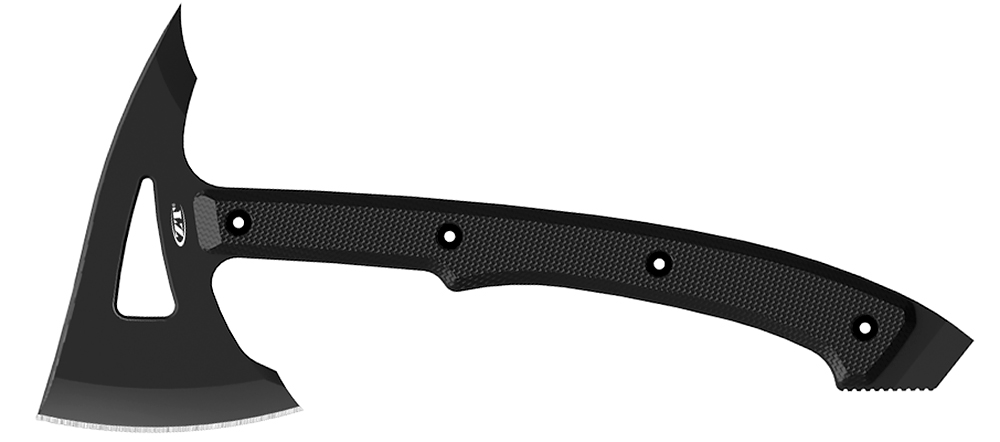
The Zero Tolerance 0102 Tactical Tomahawk.
We’ve made a tactical tomahawk and a bayonet. If you make those two things, you’ll probably make just about anything. (laughs) For a while there, we were making “one-year wonders”, so I don’t think anything would be off the table. Some of it, you might scratch your head about, or lift an eyebrow about. But maybe we’ll do a tactical nail clipper one of these days. (laughs) I don’t know, I think we’re open to just about anything.
OG: What do you think the next decade holds for Zero Tolerance?
That’s a very difficult question, the 10-year crystal ball question. It feels to me that what we want to do is create happy employees. Once we create happy employees, the end-line product that comes from that is evident to the consumer.
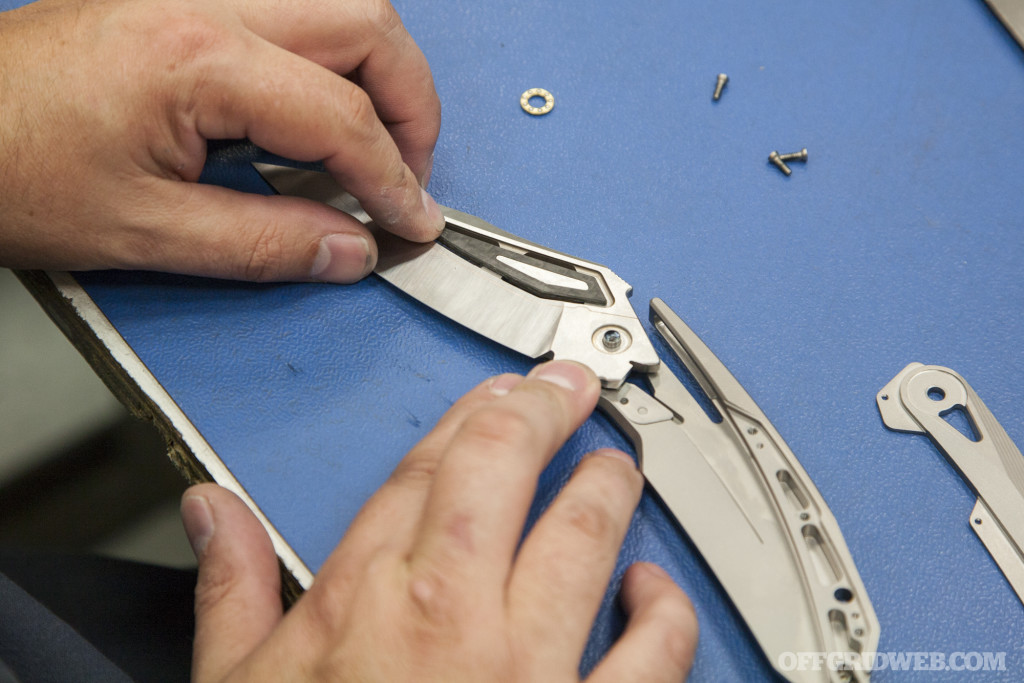
In a back room, one employee carefully assembles each limited-edition Zero Tolerance 0999.
I do believe that US manufacturing is difficult, and that the brand has challenges in the fact that the pool of customers for this particular price point is very limited. So we’re going to try to reach out to them. On marketing and social media platforms, it’s important to reach a younger demographic.
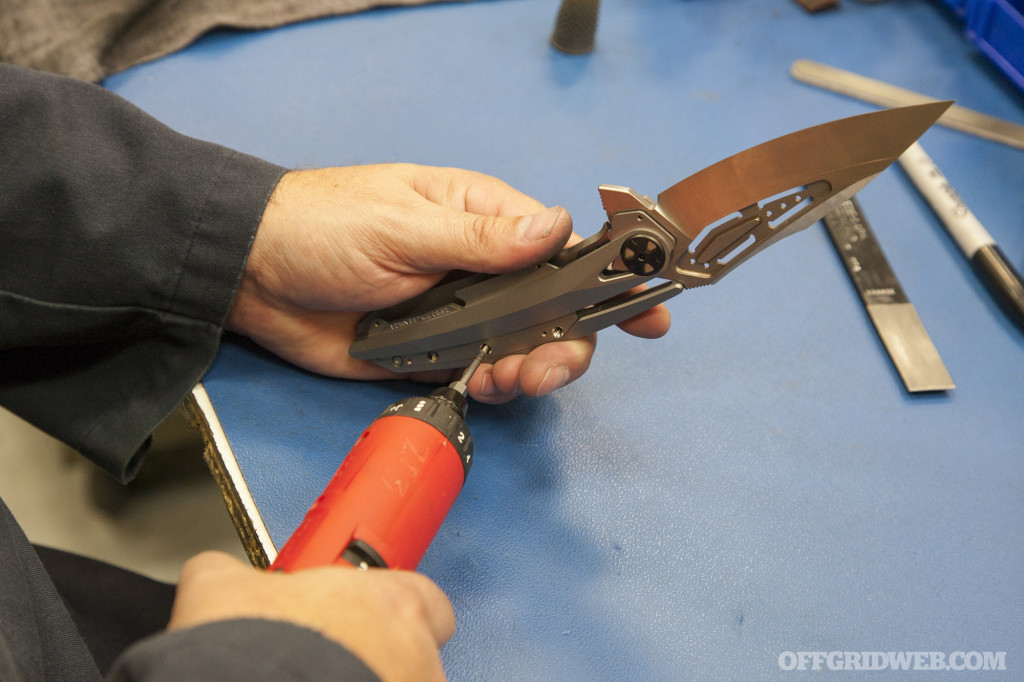
I think the future today looks very bright for Zero Tolerance, because fortunately there’s not a whole lot of full-blown production competition, there’s only a few brands. There are a lot of smaller individuals in the custom market, but as for full production brands, I think the rivals are few and far between. So we can grow with our customers, and the next ten years can be better than the first ten years.
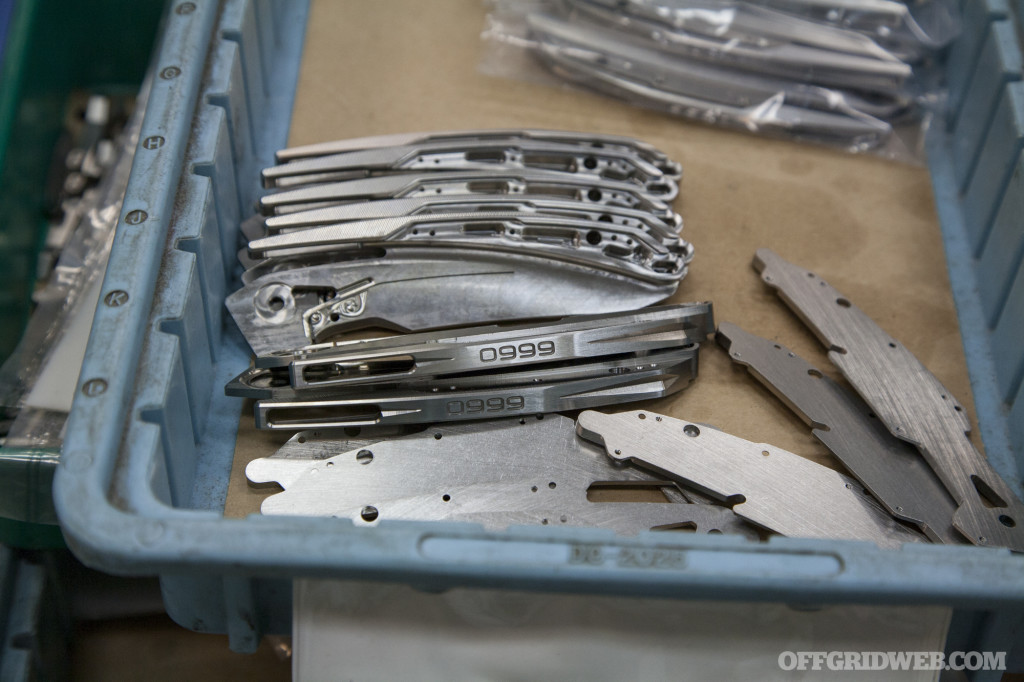
OG: What are your thoughts on the future of the knife industry as a whole?
I have mixed feelings about it. On one side, from a legality standpoint it’s scary. We’ve worked with the AKTI — the American Knife and Tool Institute — to work with lawmakers and lobby for reasonable knife laws. We’ve invested a lot into that group, and they’ve done a lot of good things.
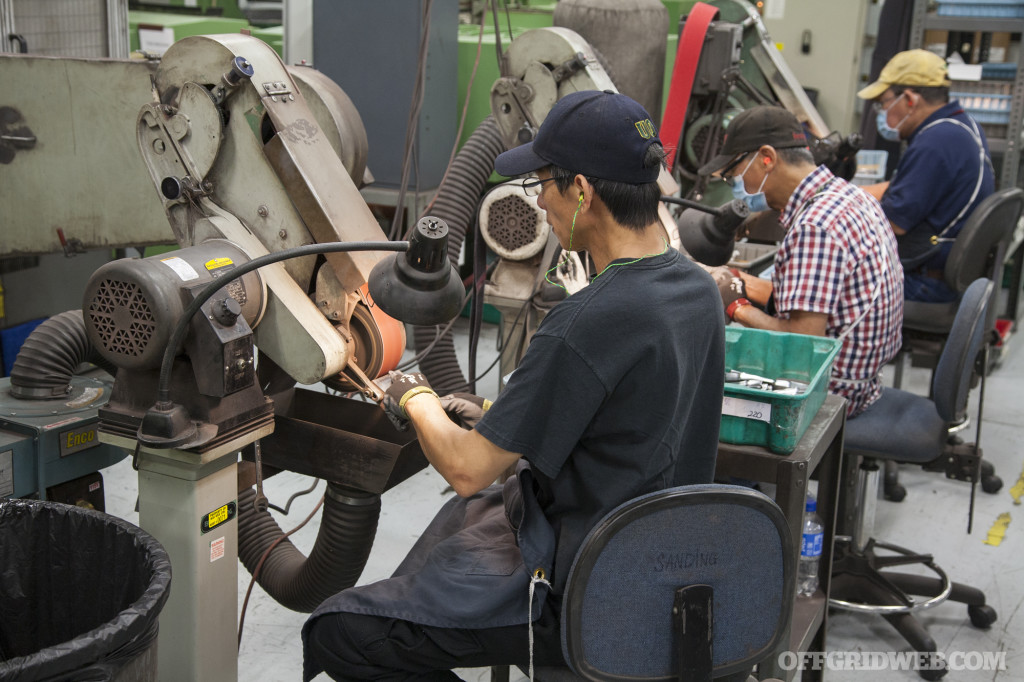
At the same time, I think it’s going to be interesting to see, because unfortunately a knife is a product that carries liability with it. I hope that the consumer continues to carry knives, and that we’re not getting to that place of Wall-E where everything’s being done for us.
Talking about the urban aspect, it’s a little bit scary — the questions being asked about “Why do you need a knife? What do you want a knife for? What are you going to use a knife for?” I think that there are, thank goodness, still a lot of people out there that do need knives. I would say that those people that don’t have a knife or don’t carry a knife, they don’t get it. And it’s one of those things that if someone would give them a knife, and they would carry it, they’d use it more than they honestly thought they ever would.
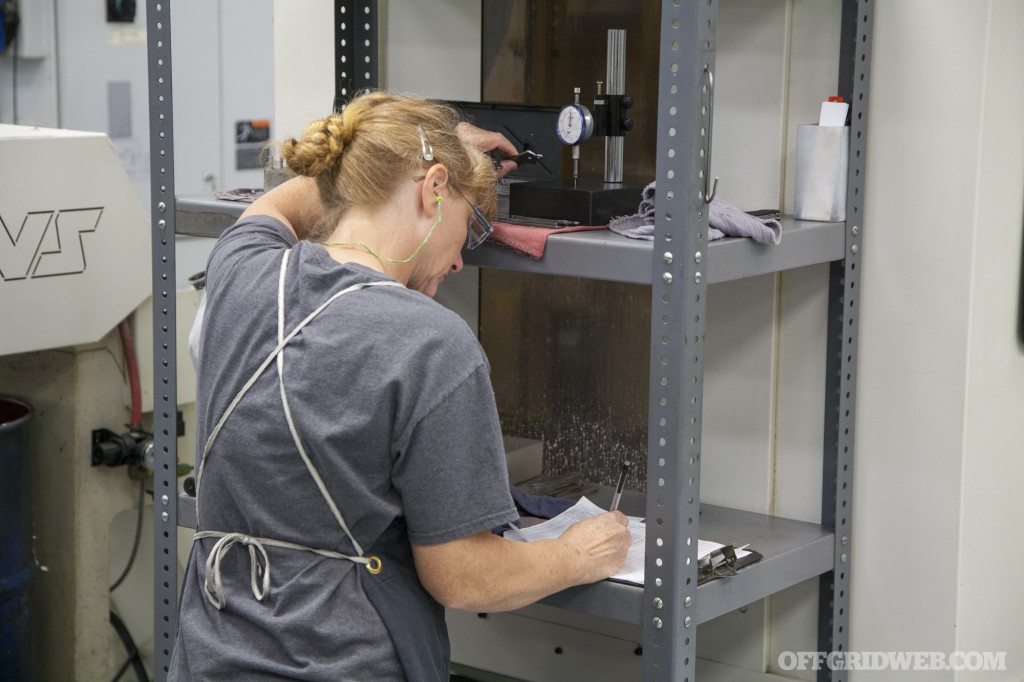
In many cases when you don’t have a knife, you’ll wish you did. You’re ripping things, or opening things with the wrong tool, or you’re using your teeth. (laughs) You’re clawing and scratching versus just cutting. We’re trying to show people that knives do in fact have utility.
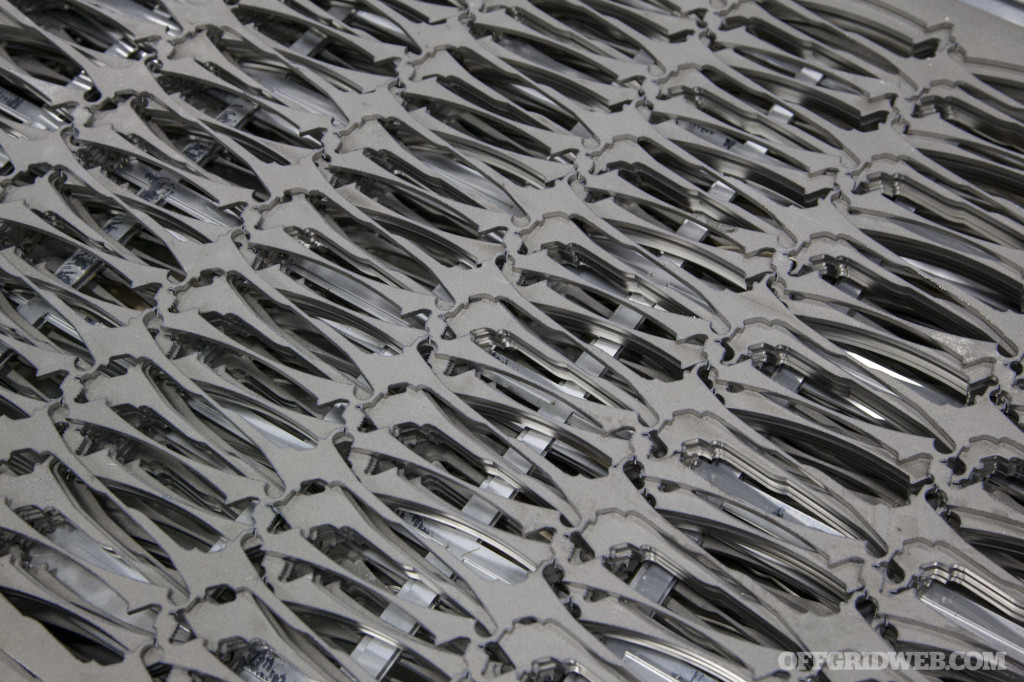
I think education is a really big deal for us, to show people that you will use this product more than you think you will. Many people today don’t realize how important it is to have a knife on them, for a multitude of reasons. Sometimes they think of it very offensively or defensively, but it doesn’t have to have anything to do with either one of those things. It’s a tool.
Closing Thoughts
OG: Thanks again for your time. Do you have any closing thoughts for our readers?
I’d just say that being ten years in, it’s an honor to still be in business with the brand. We have appreciated the support of our customers, and without them we wouldn’t even be here. We hear you, we want to grow with you, now and in the future.
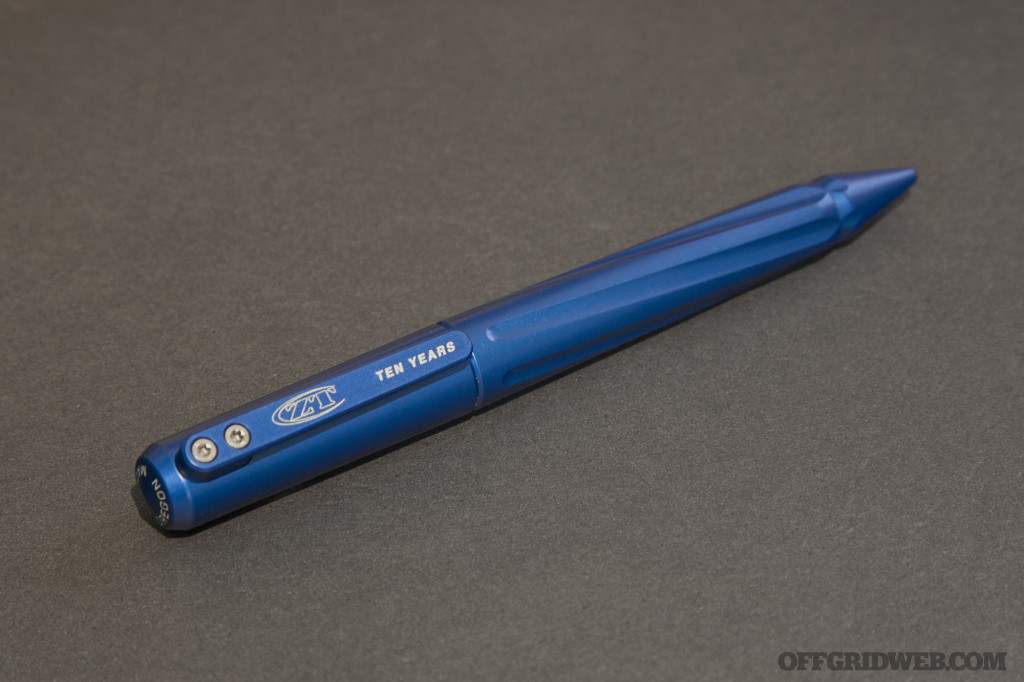
I want to thank them for all their support, and let them know that there’s lots of awesome stuff in the pipeline, and we’re not going anywhere. The future looks bright for Zero Tolerance, and it’s going to be really good.
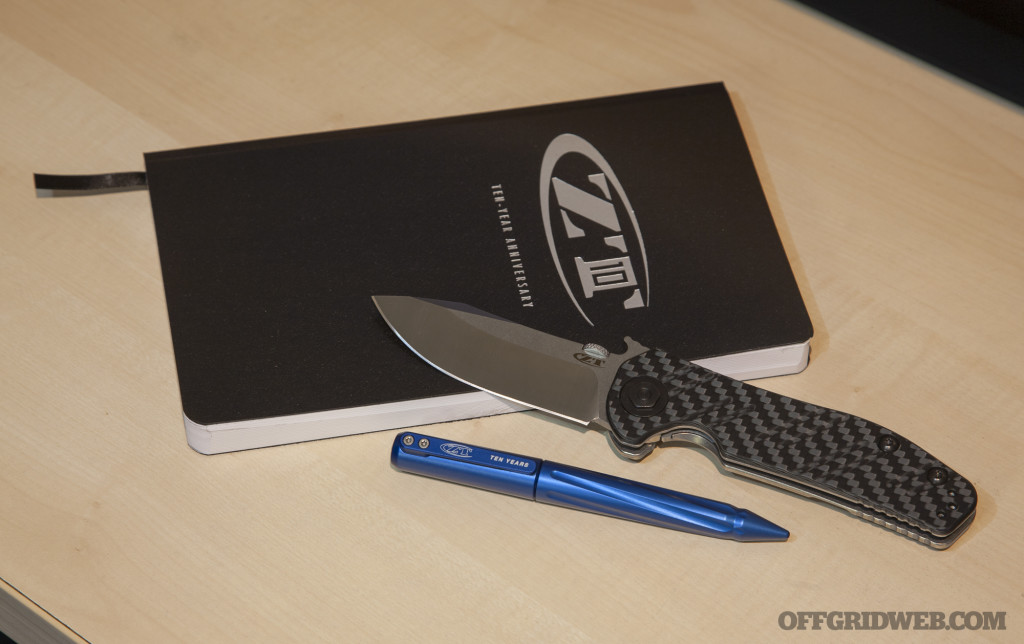
Editor’s note: Thomas graciously gave us some awesome parting gifts at the end of our interview — a blue limited-edition Zero Tolerance “Ten Years” tactical pen, a matching notebook, and one of the last existing examples of the limited-edition ZT 0630CF.
Photo Gallery
Check out the “Photos from this Article” section below for dozens of additional photos from our Zero Tolerance factory tour.

